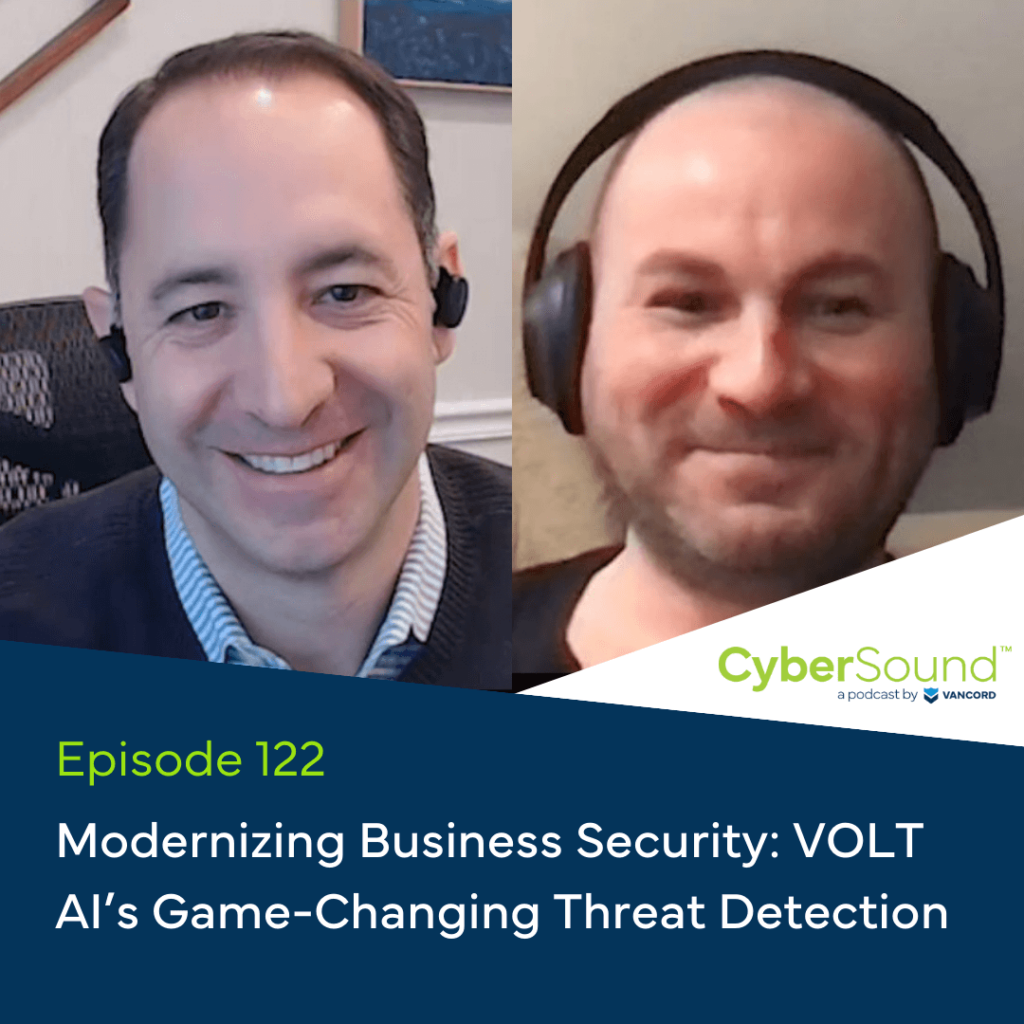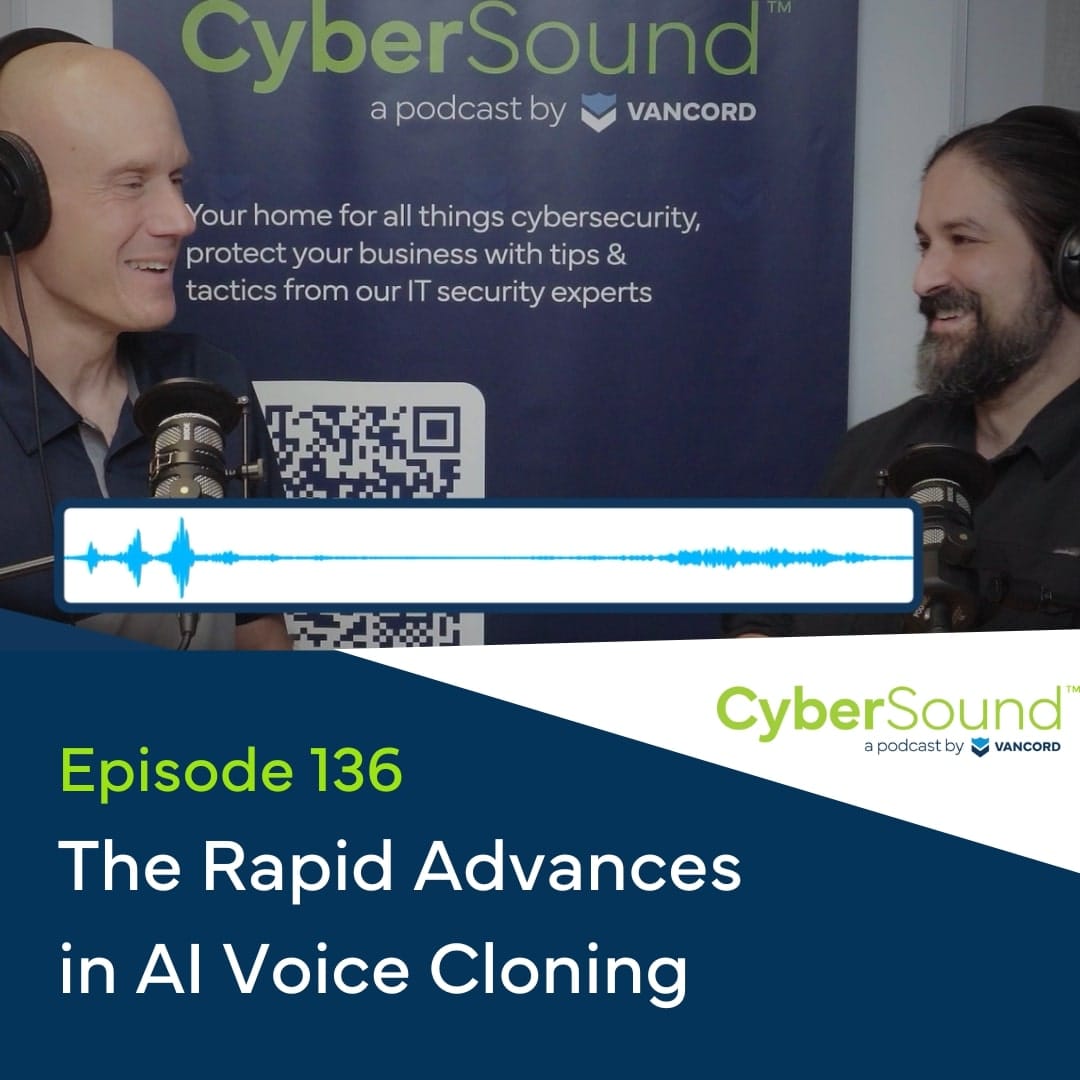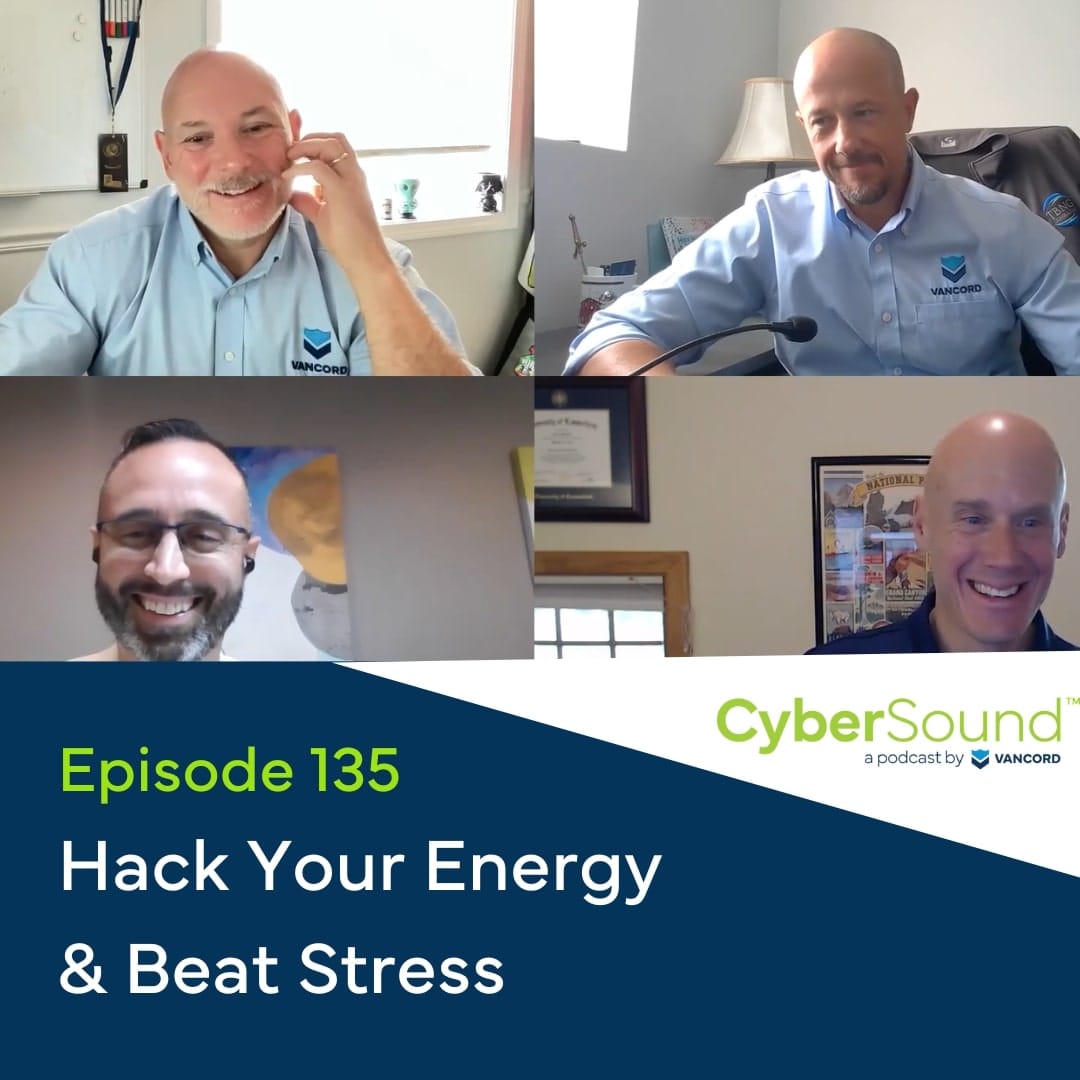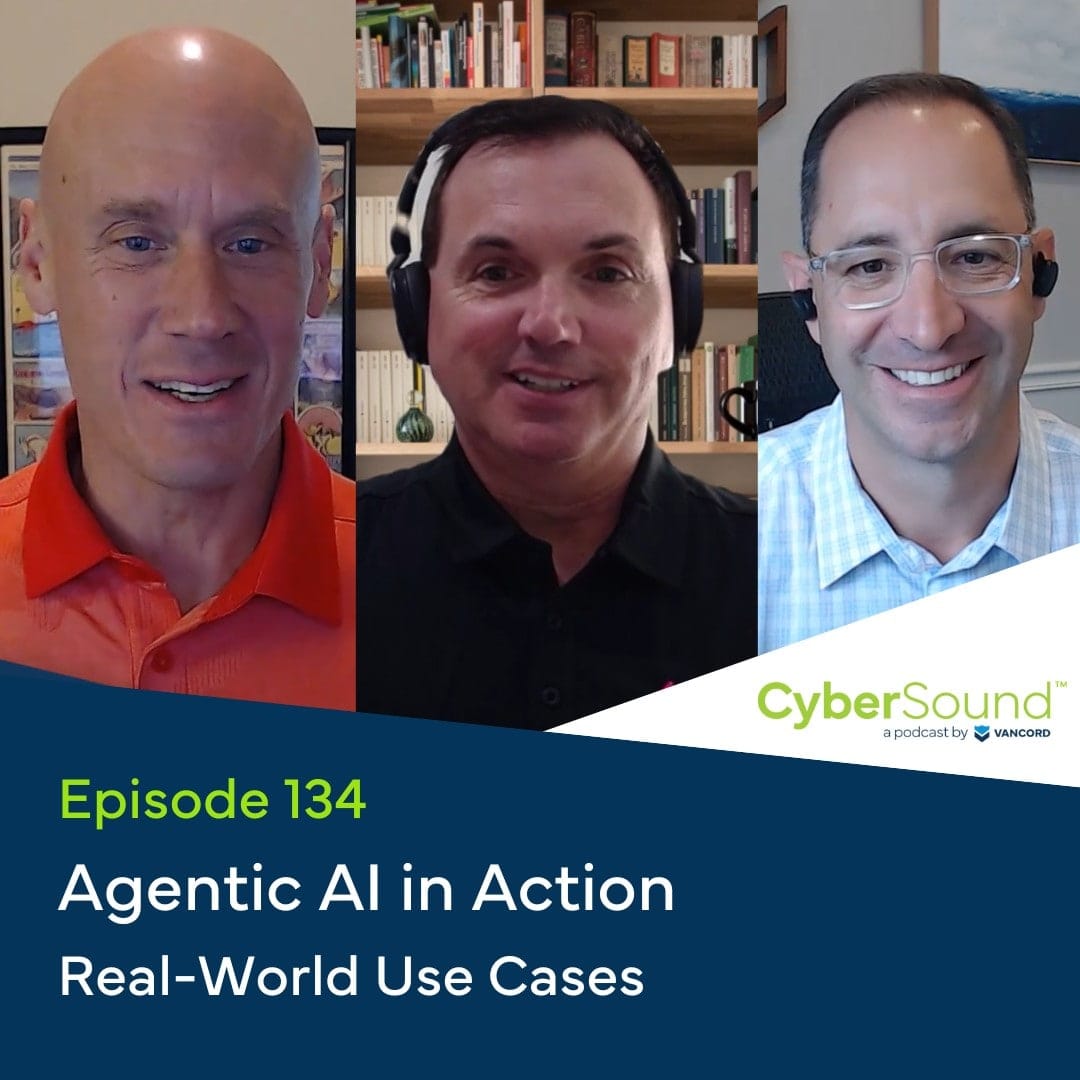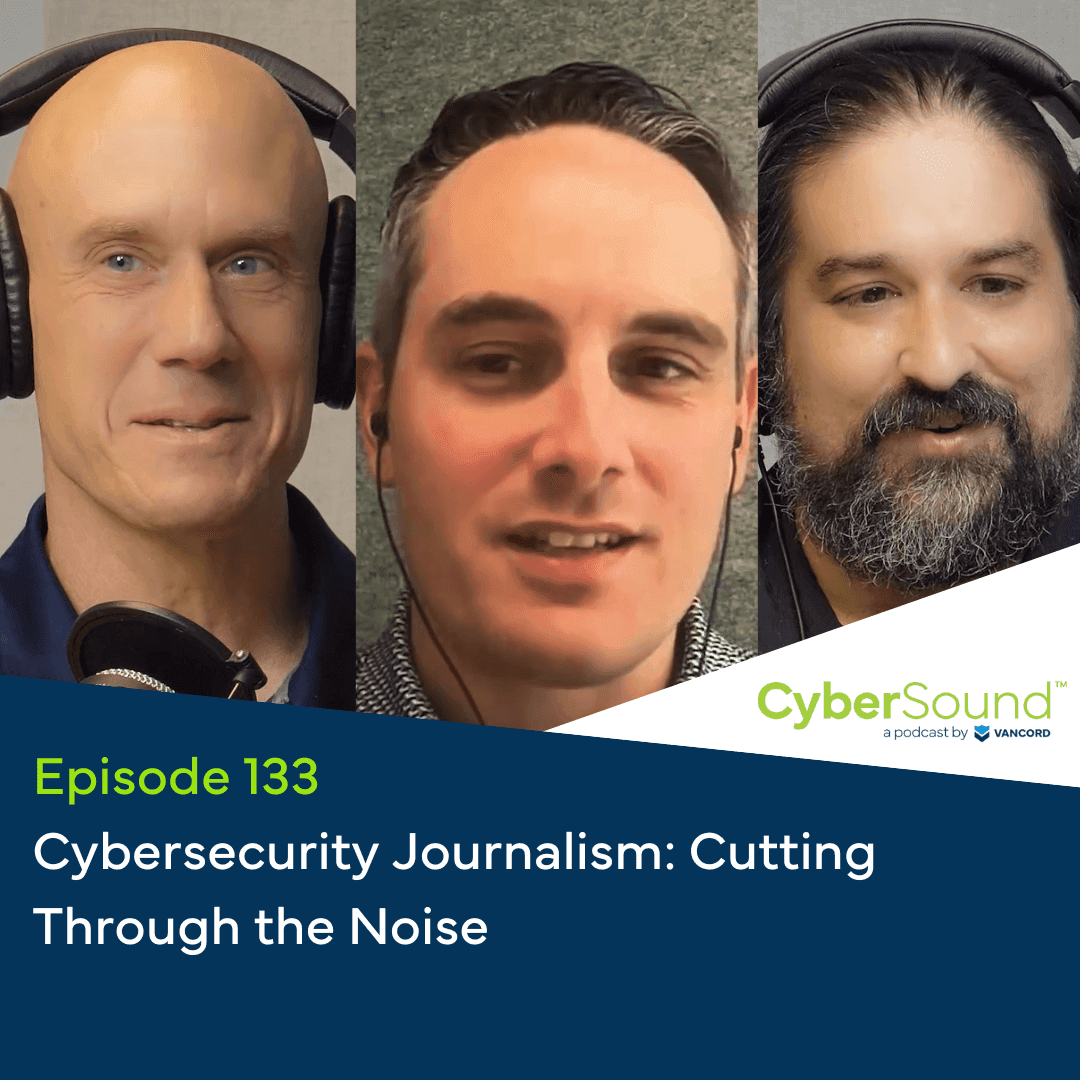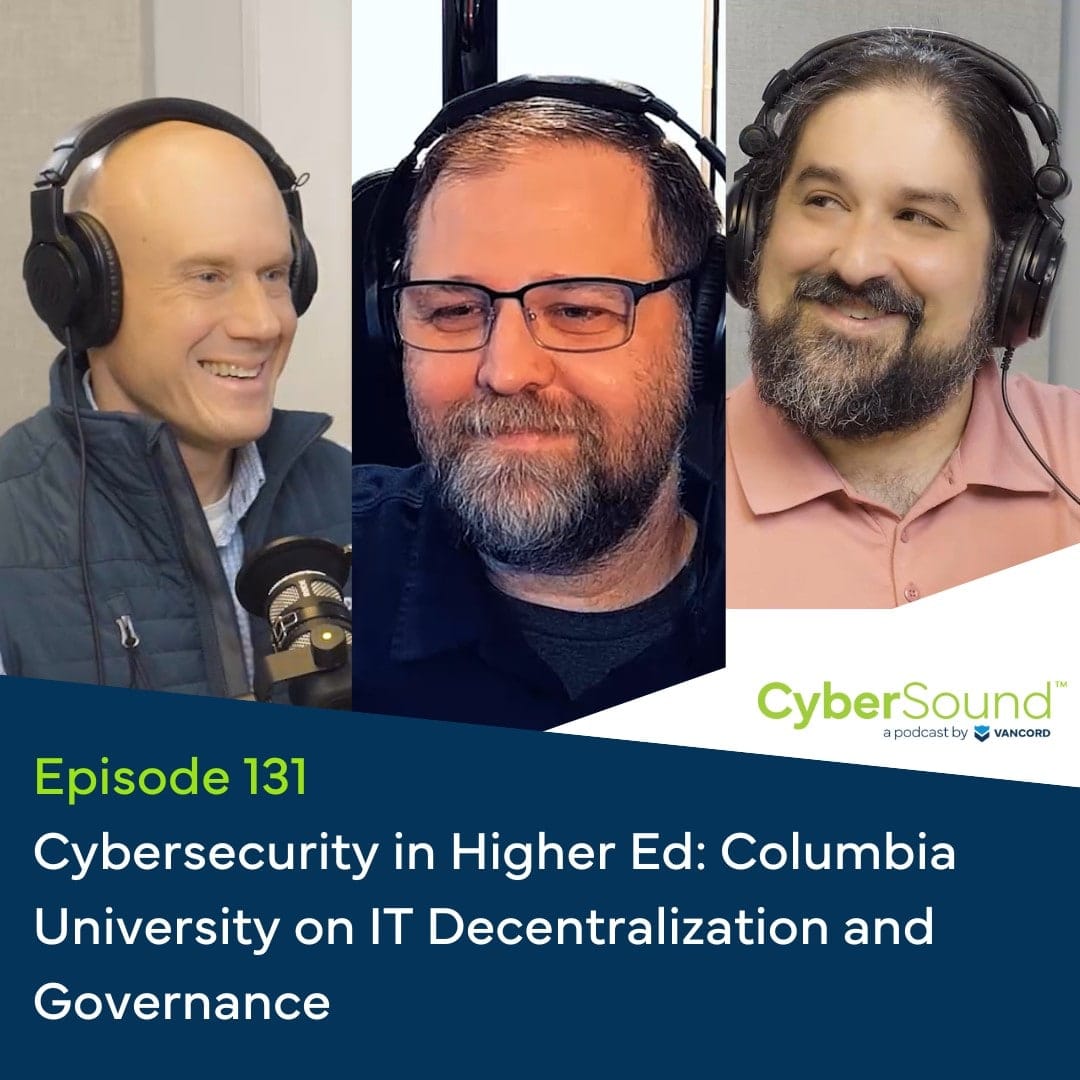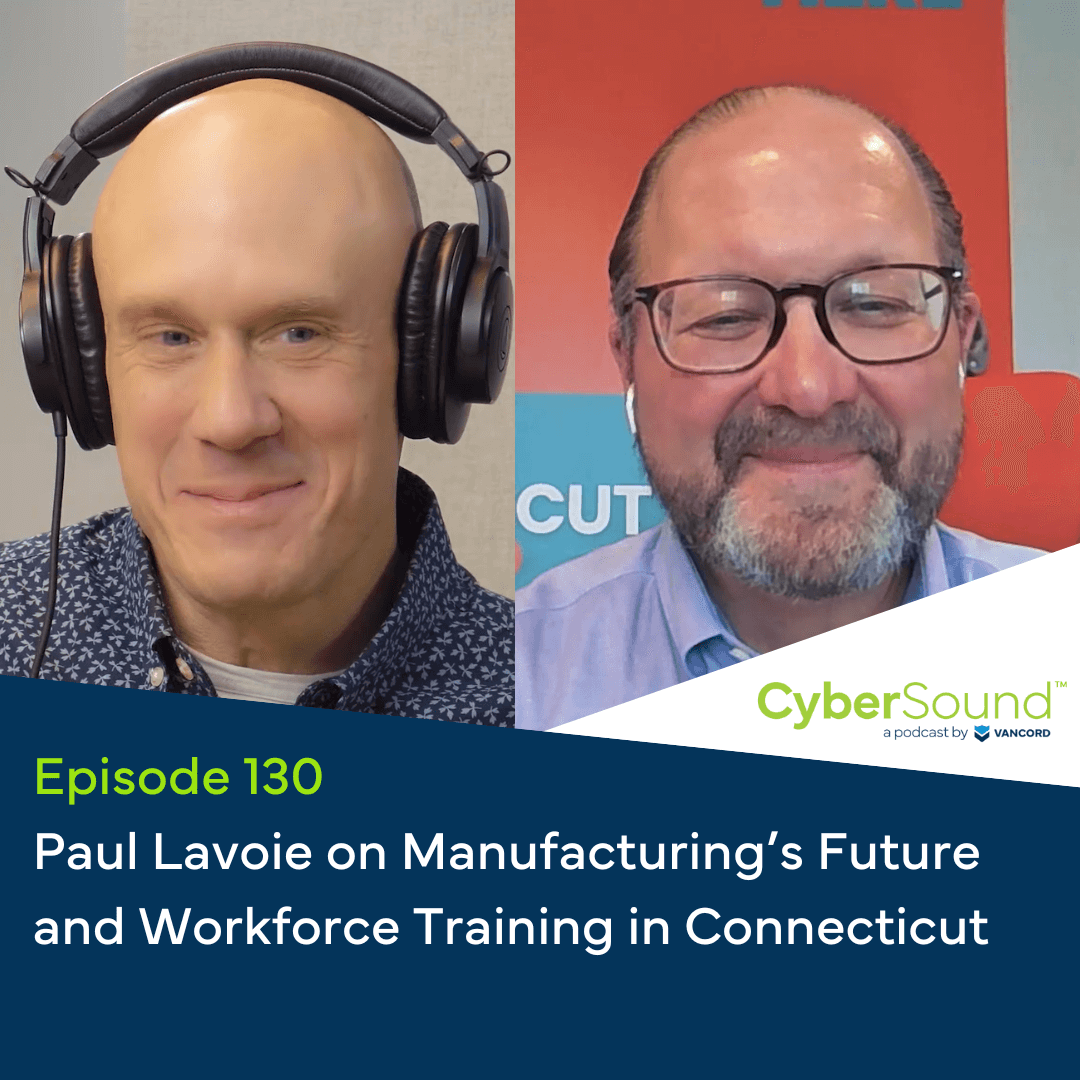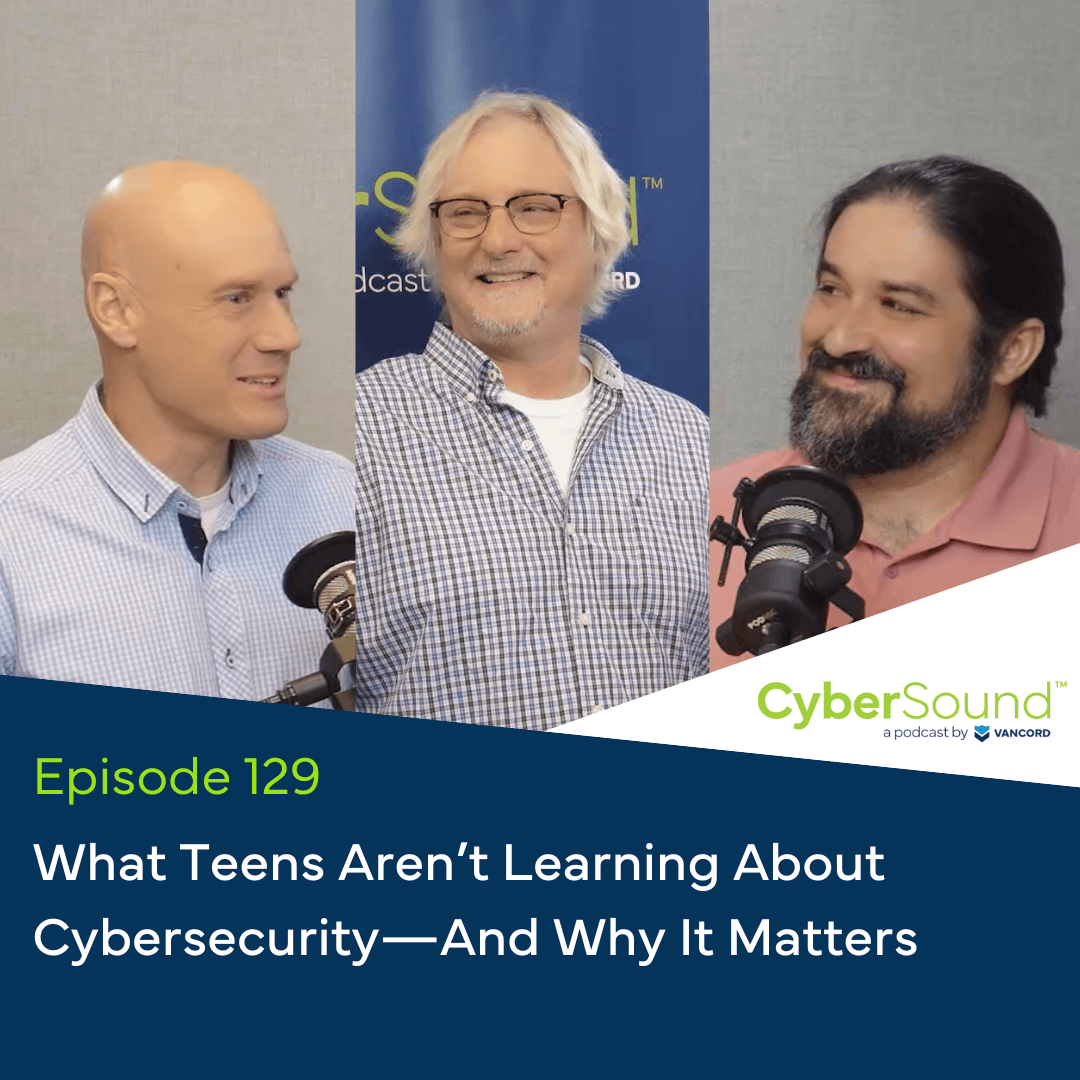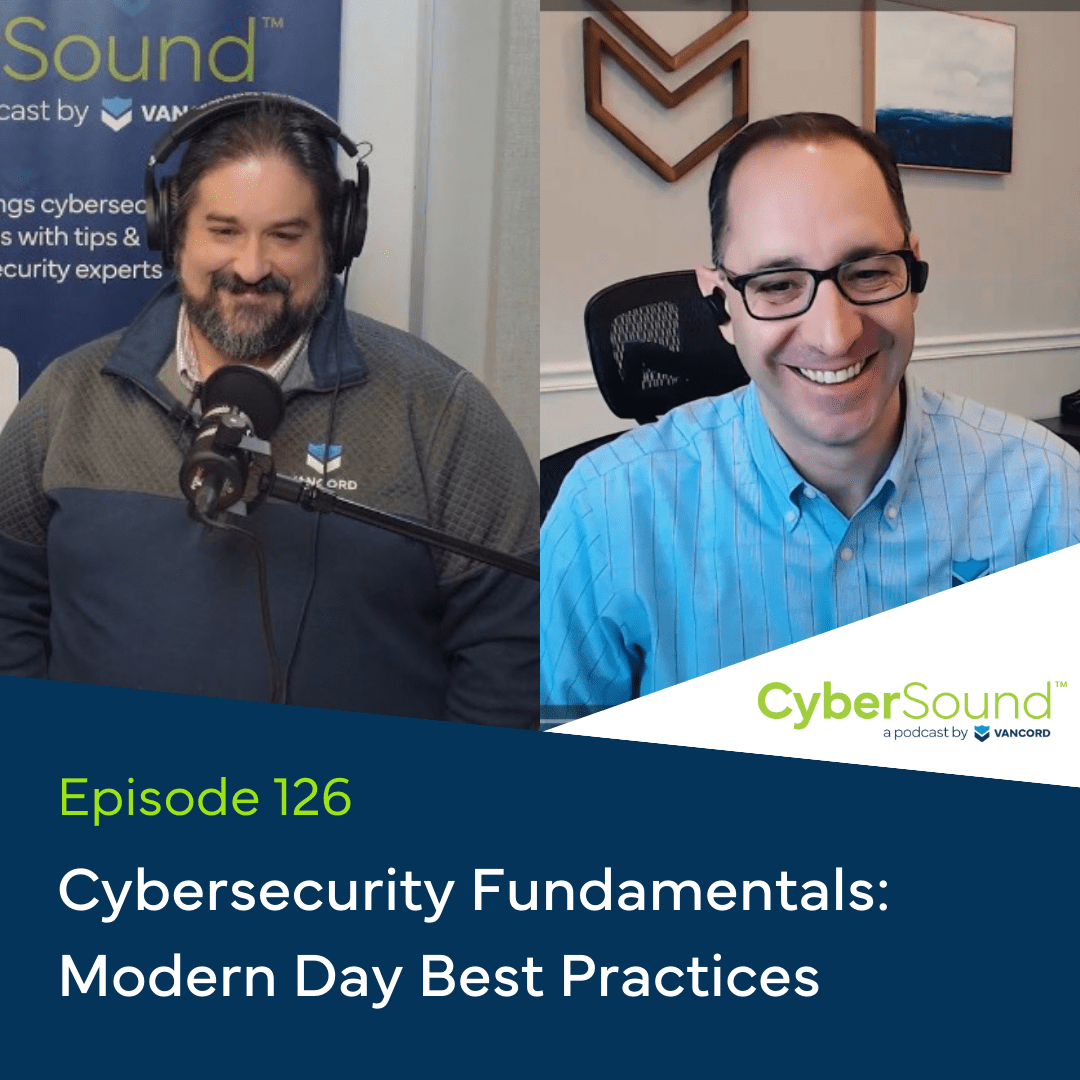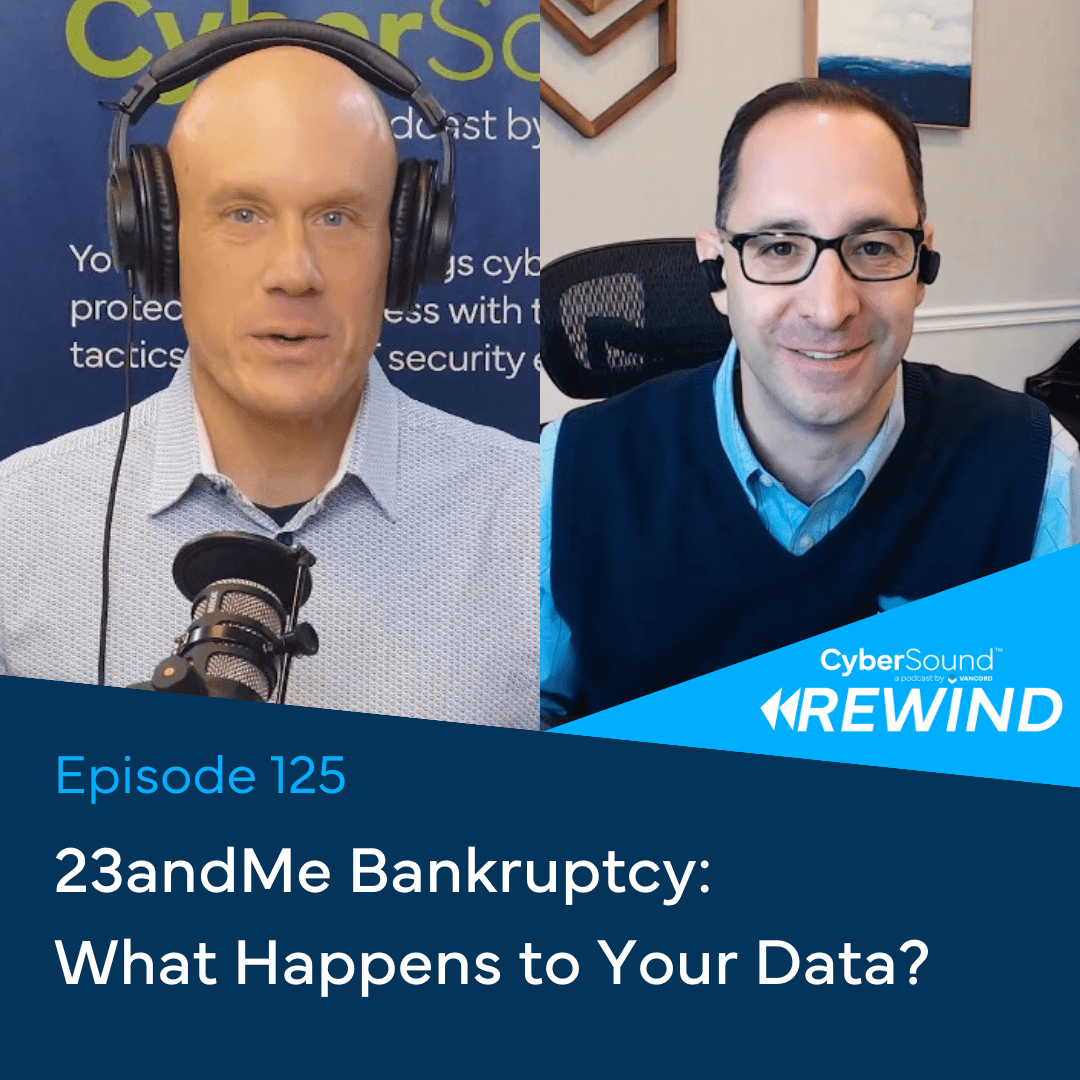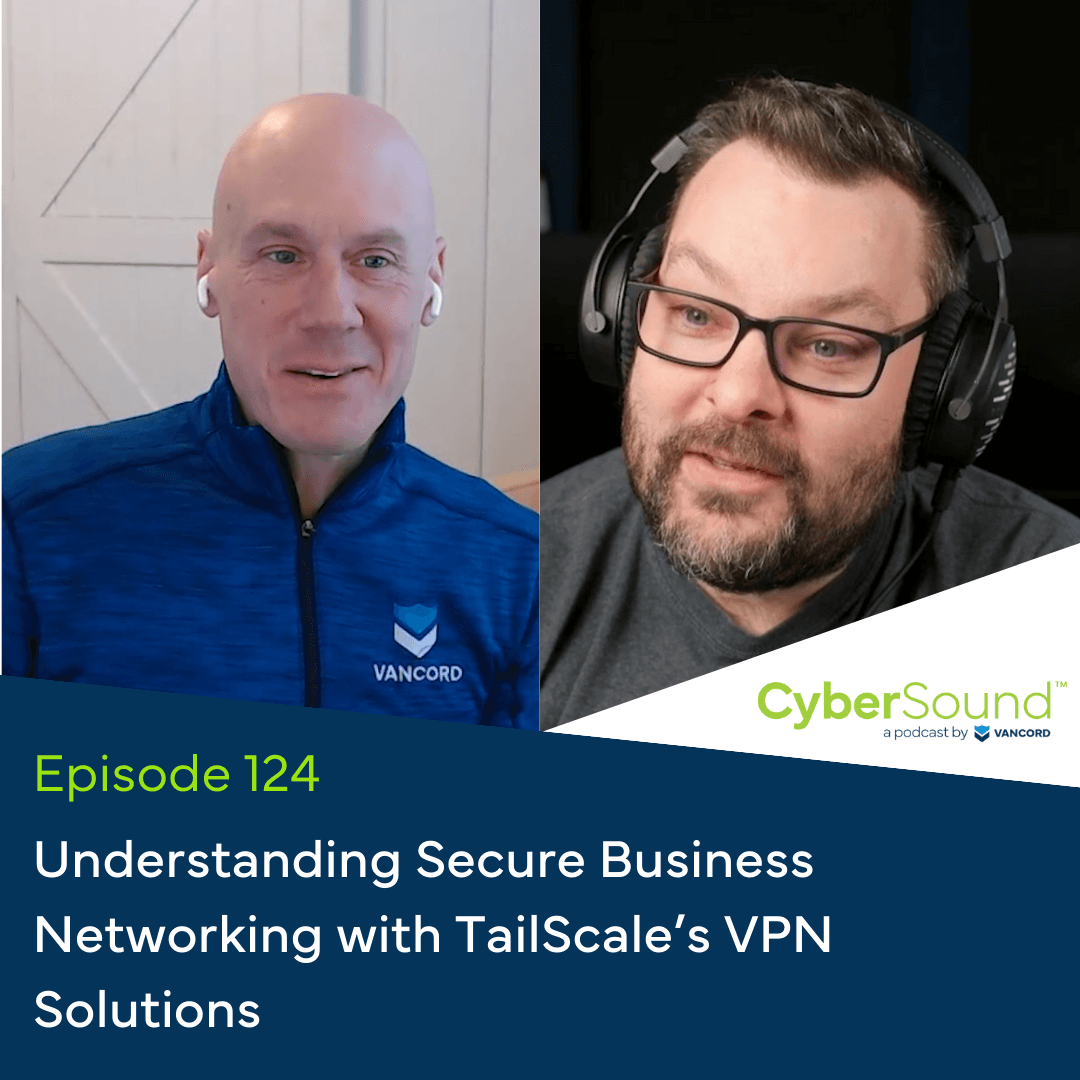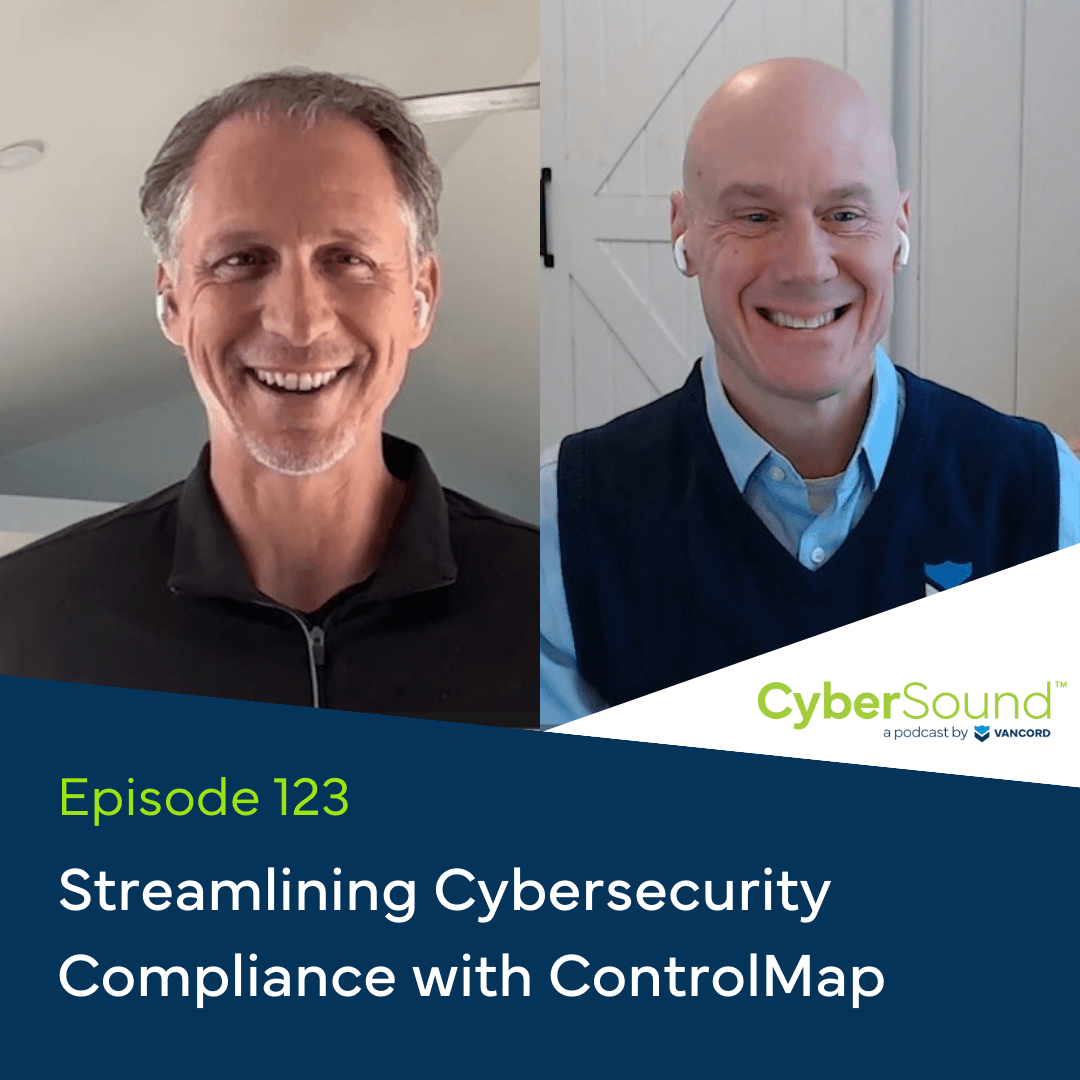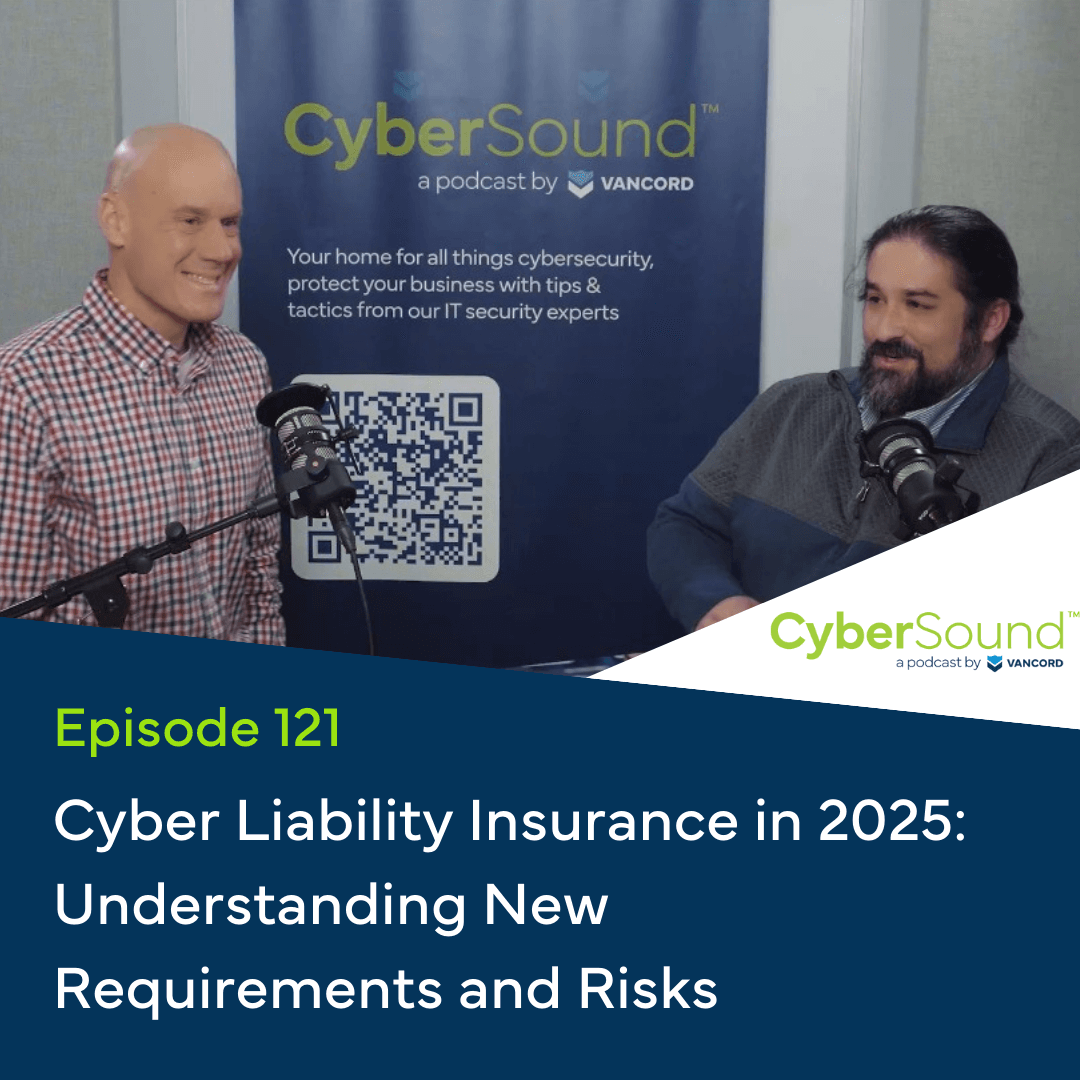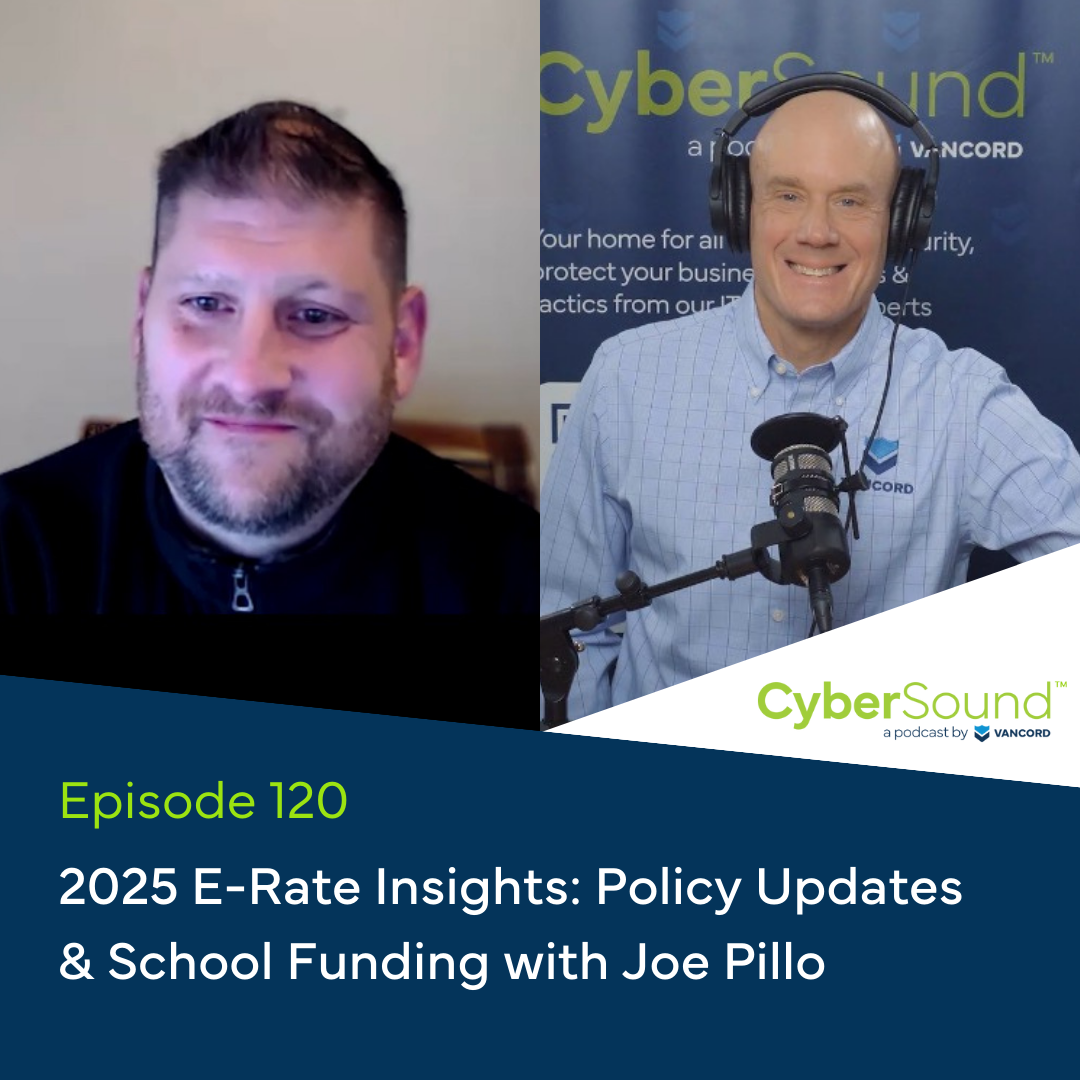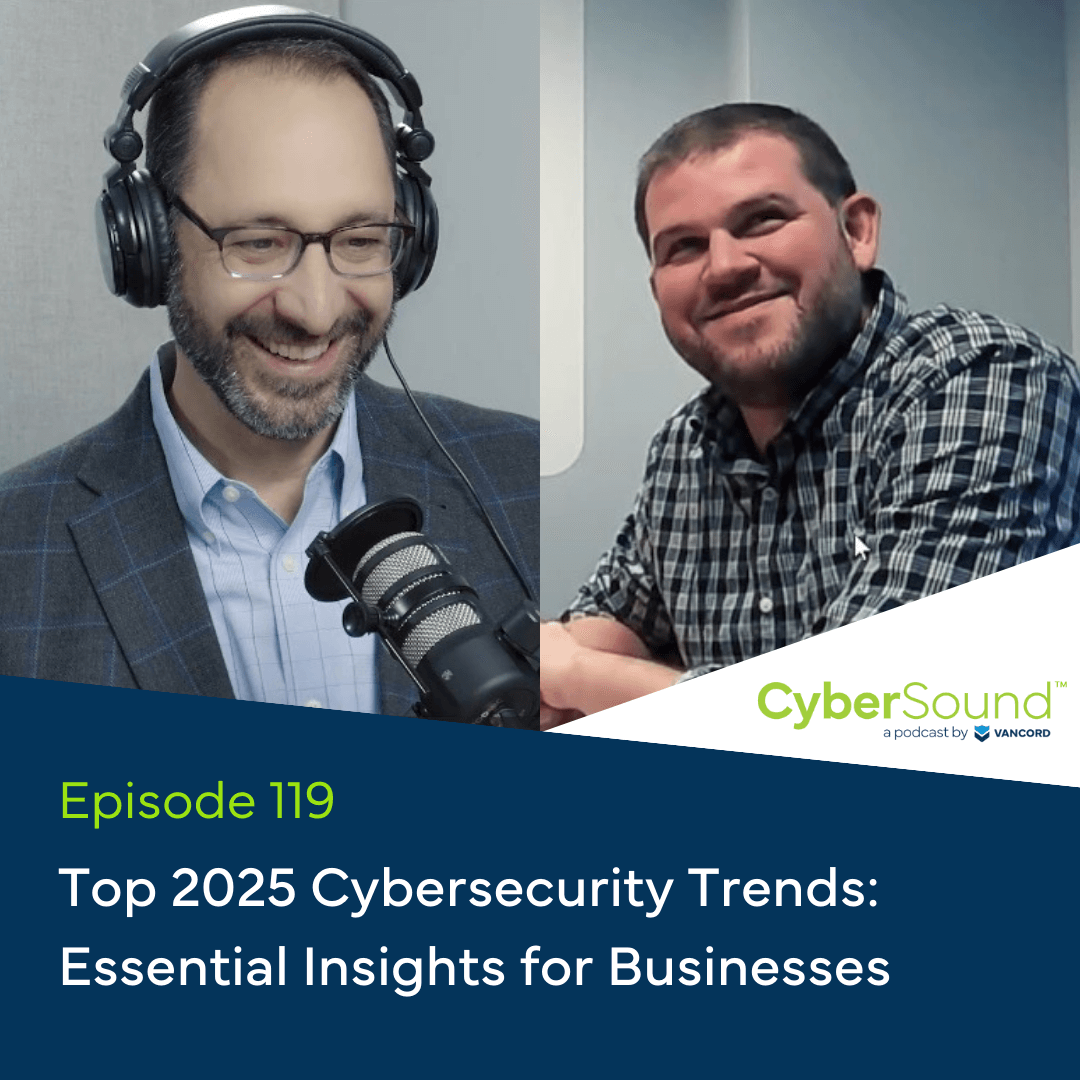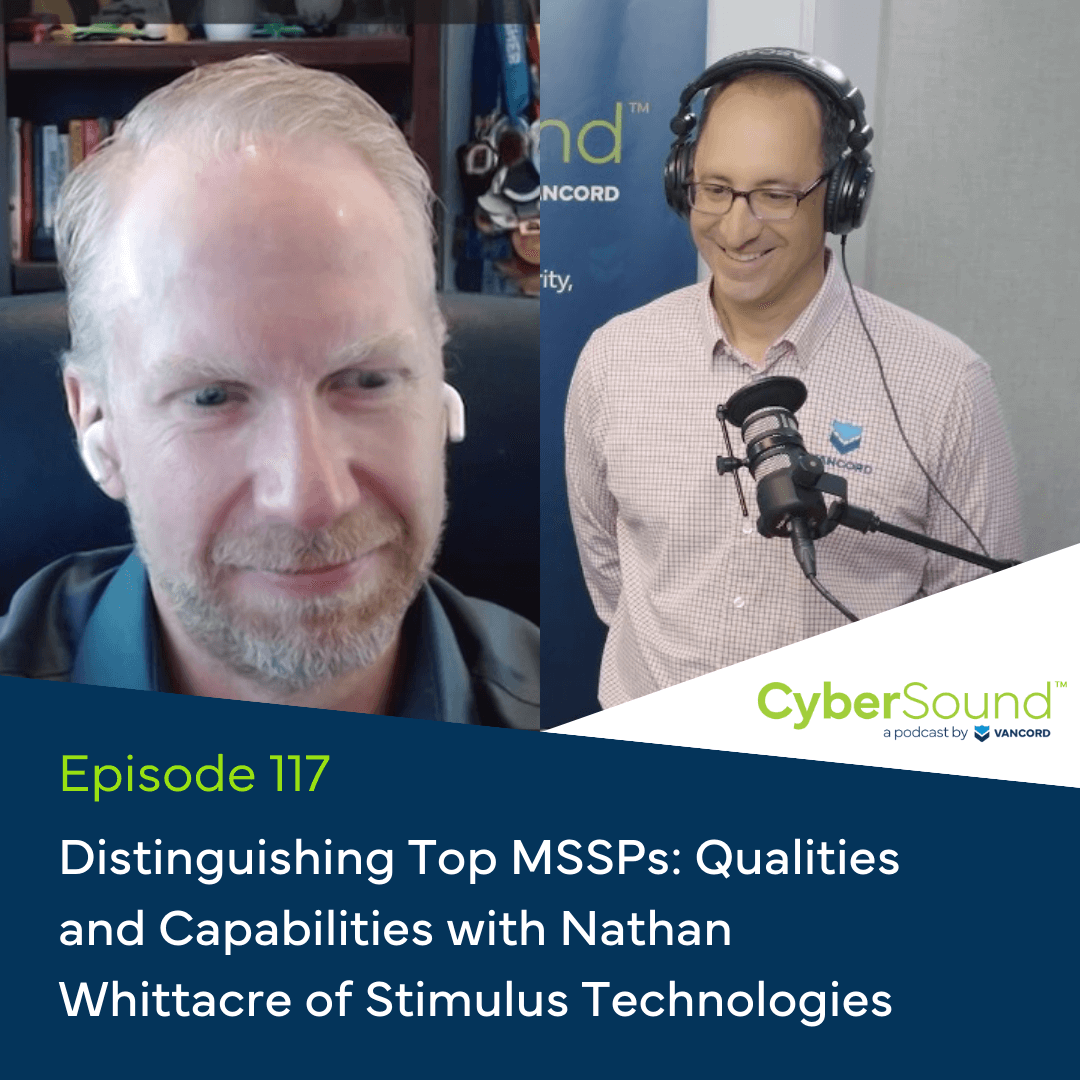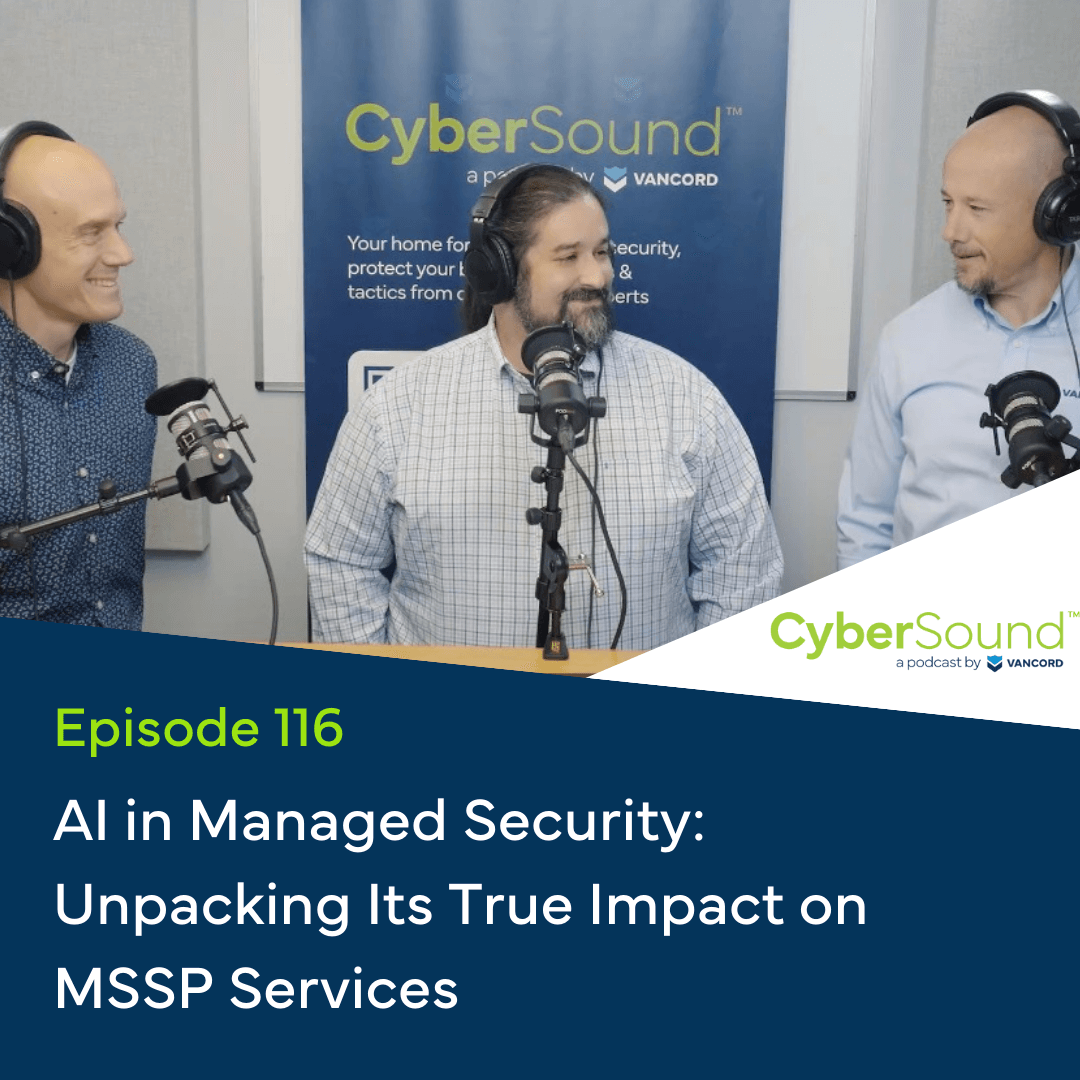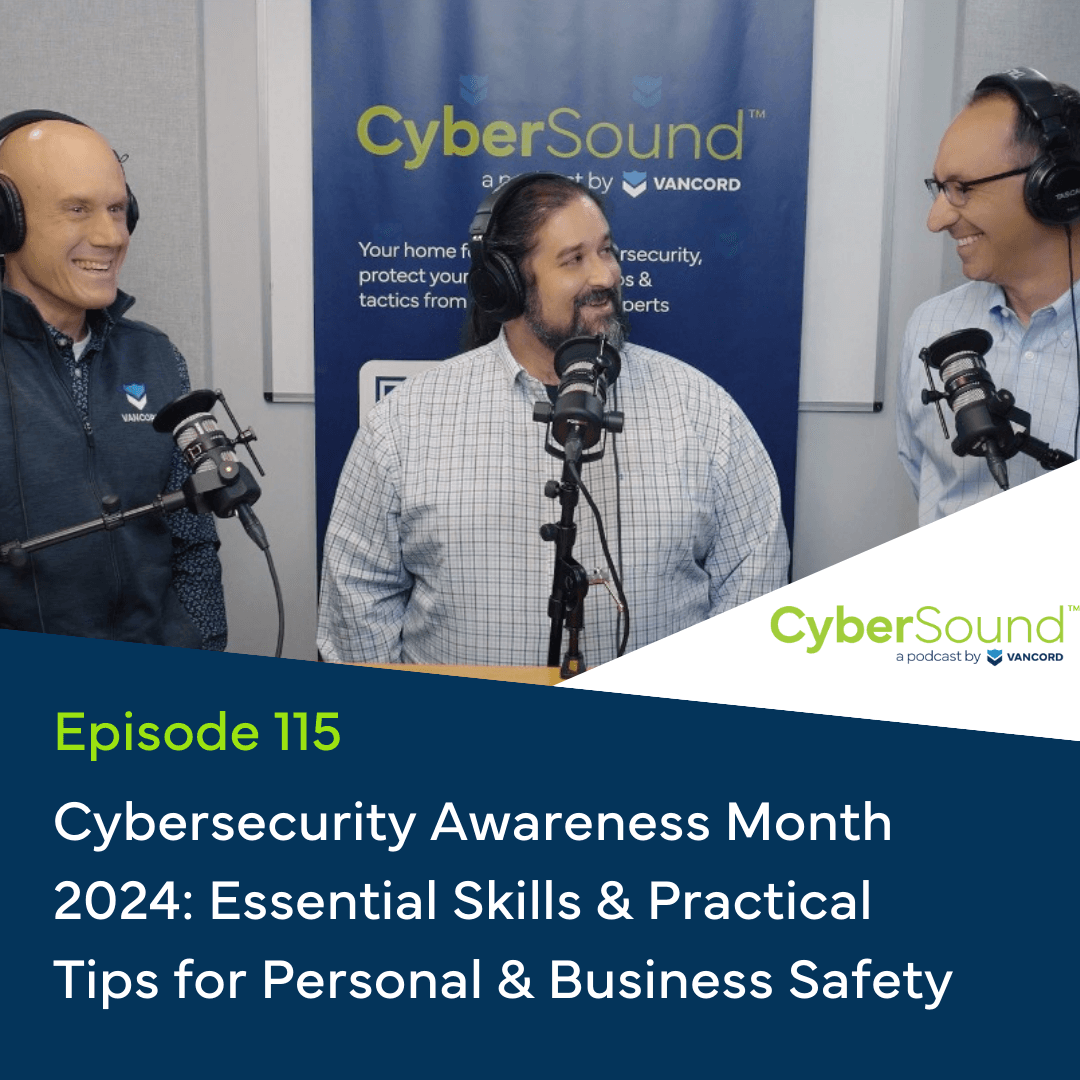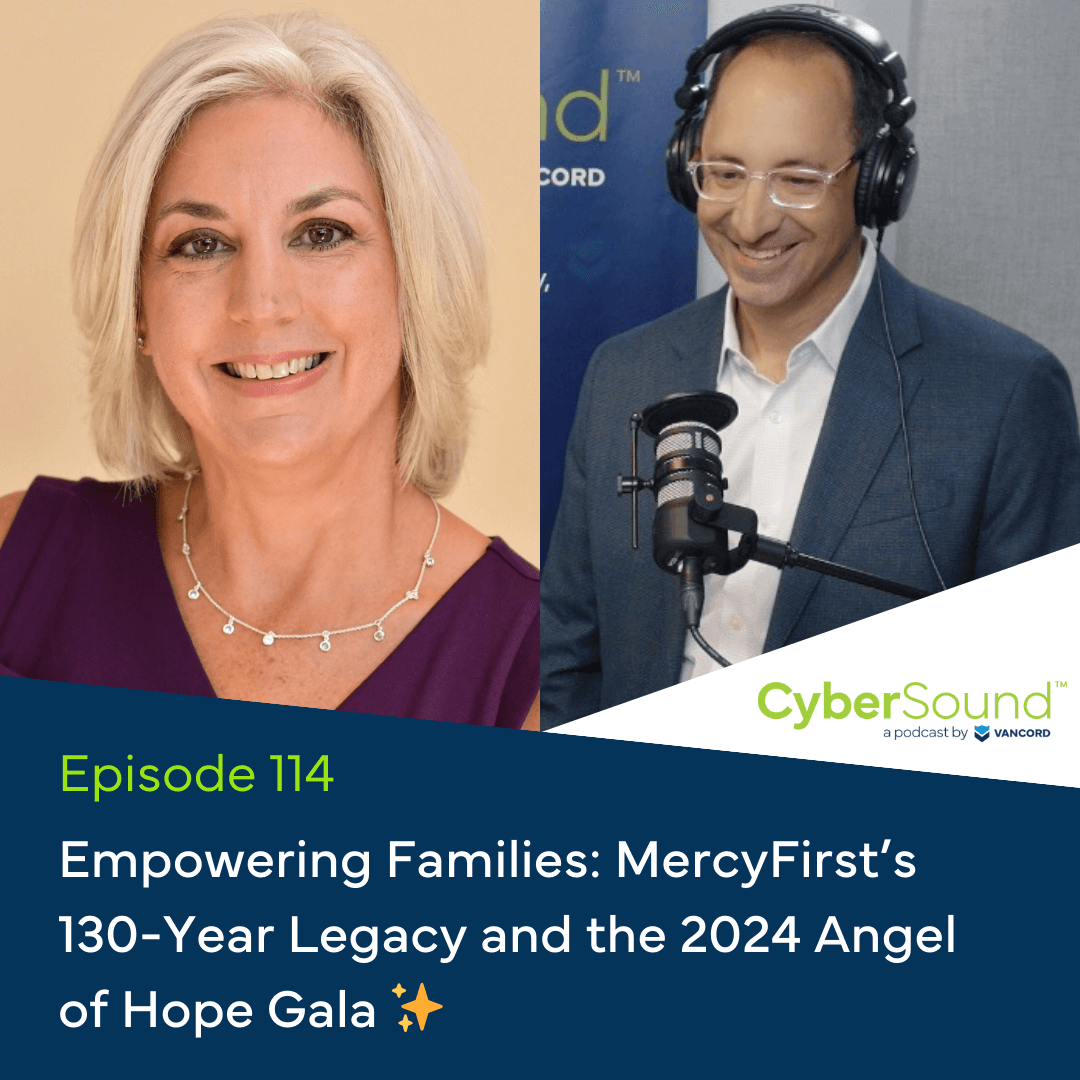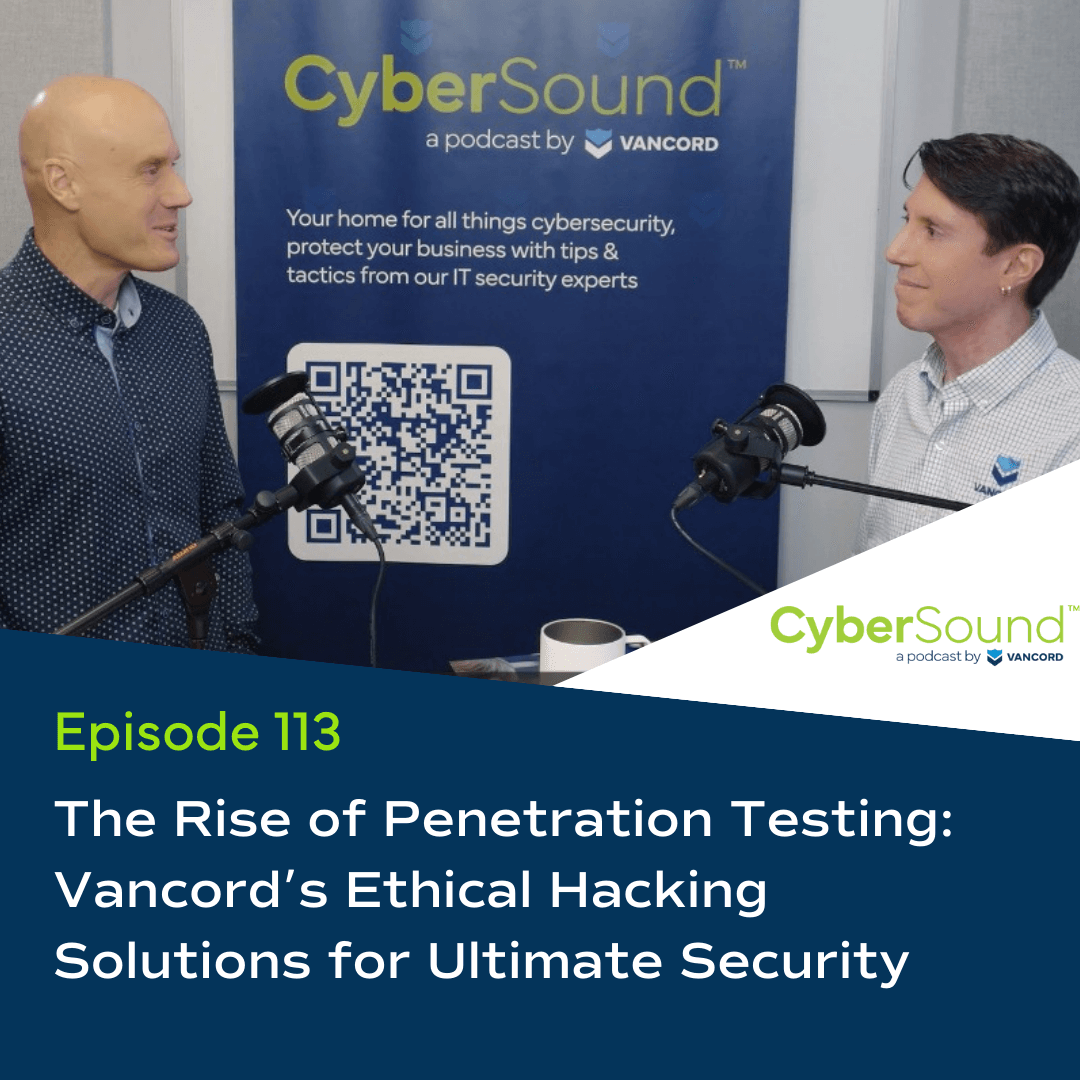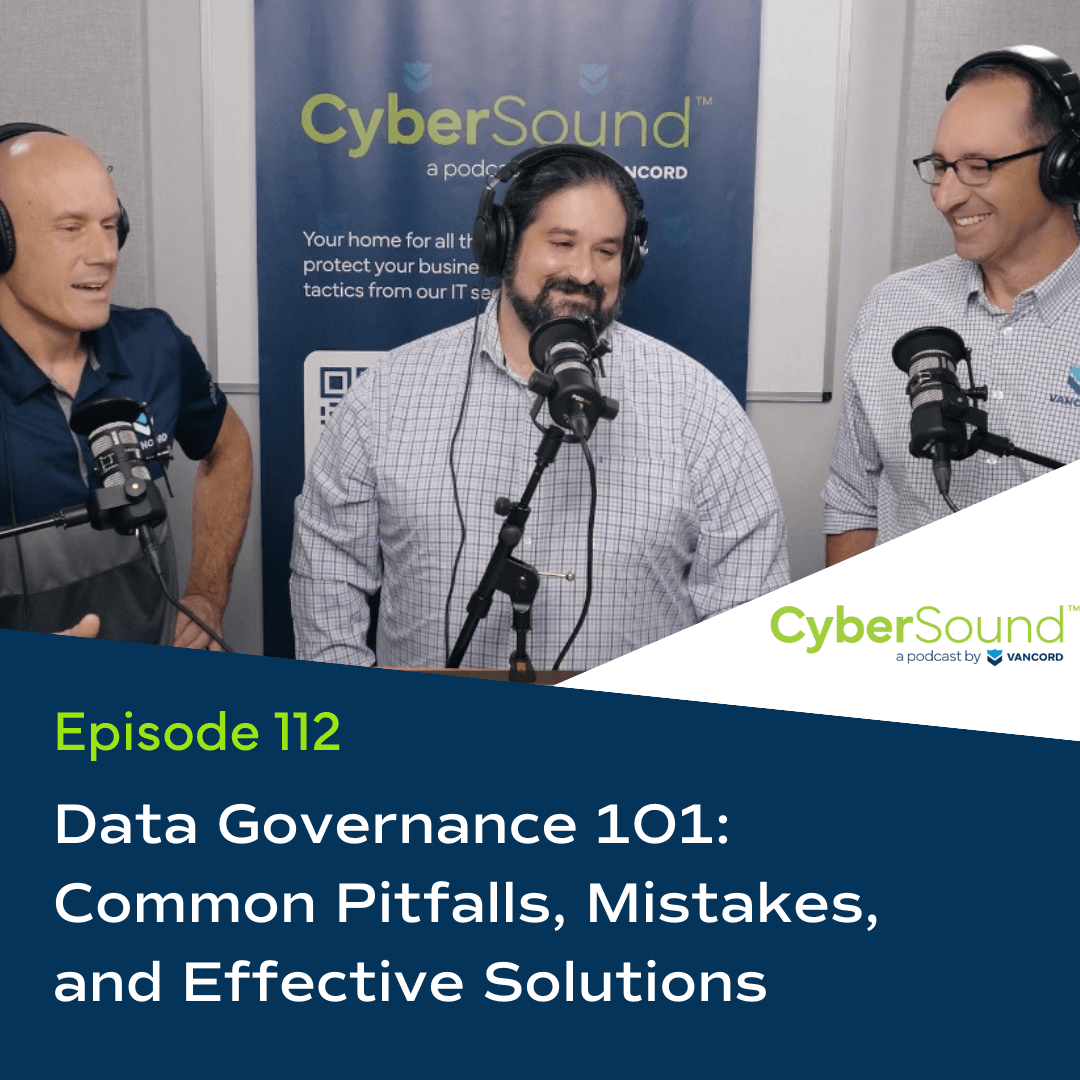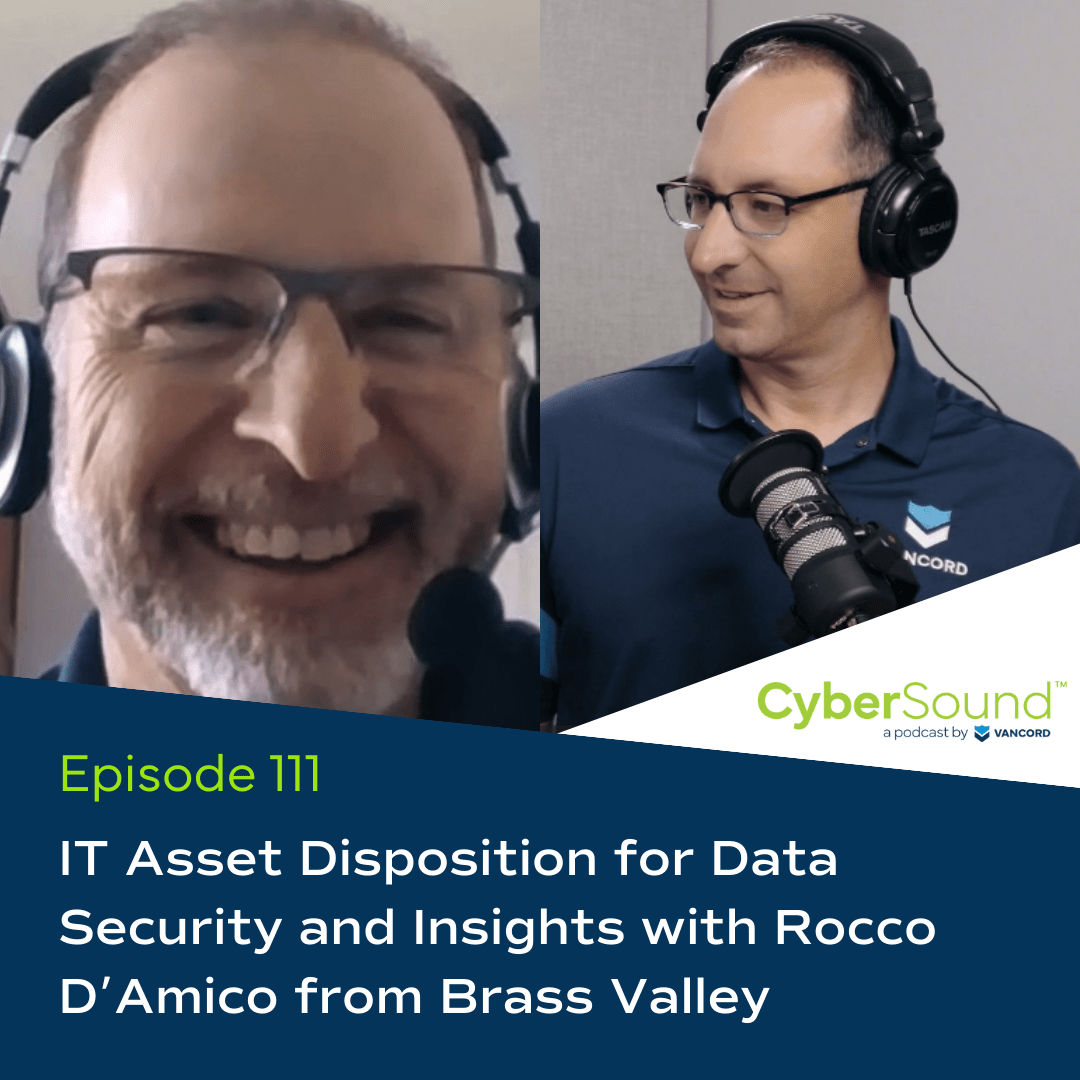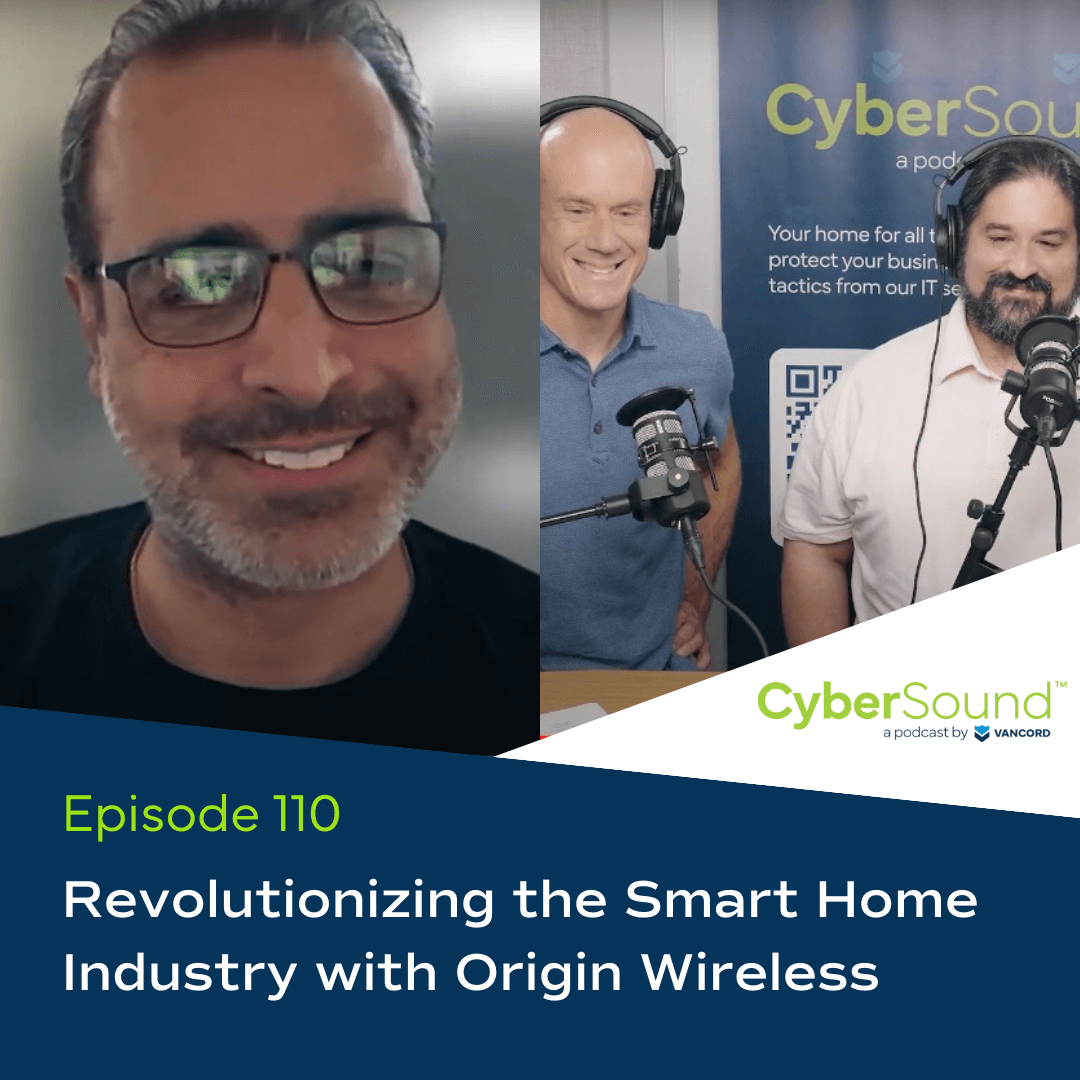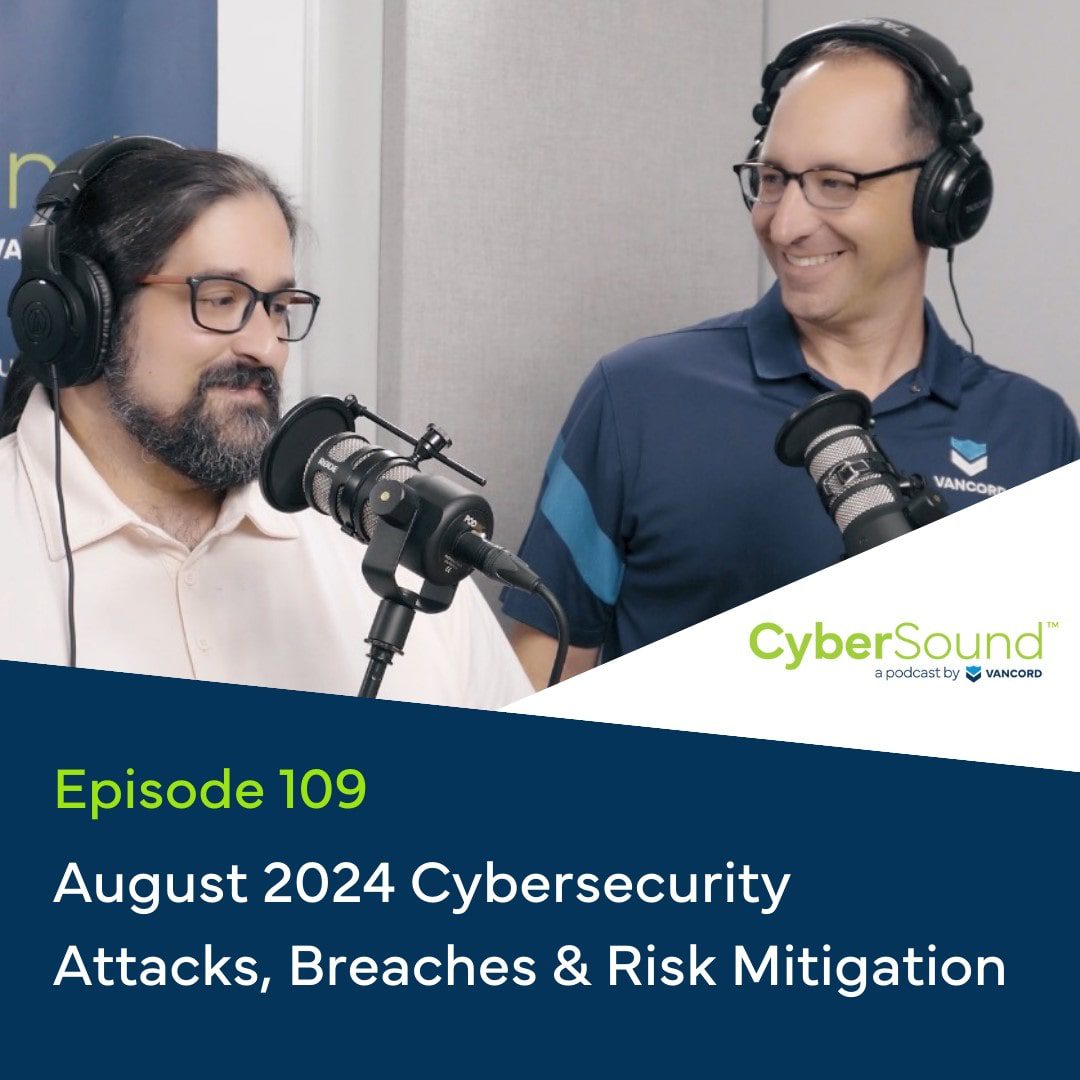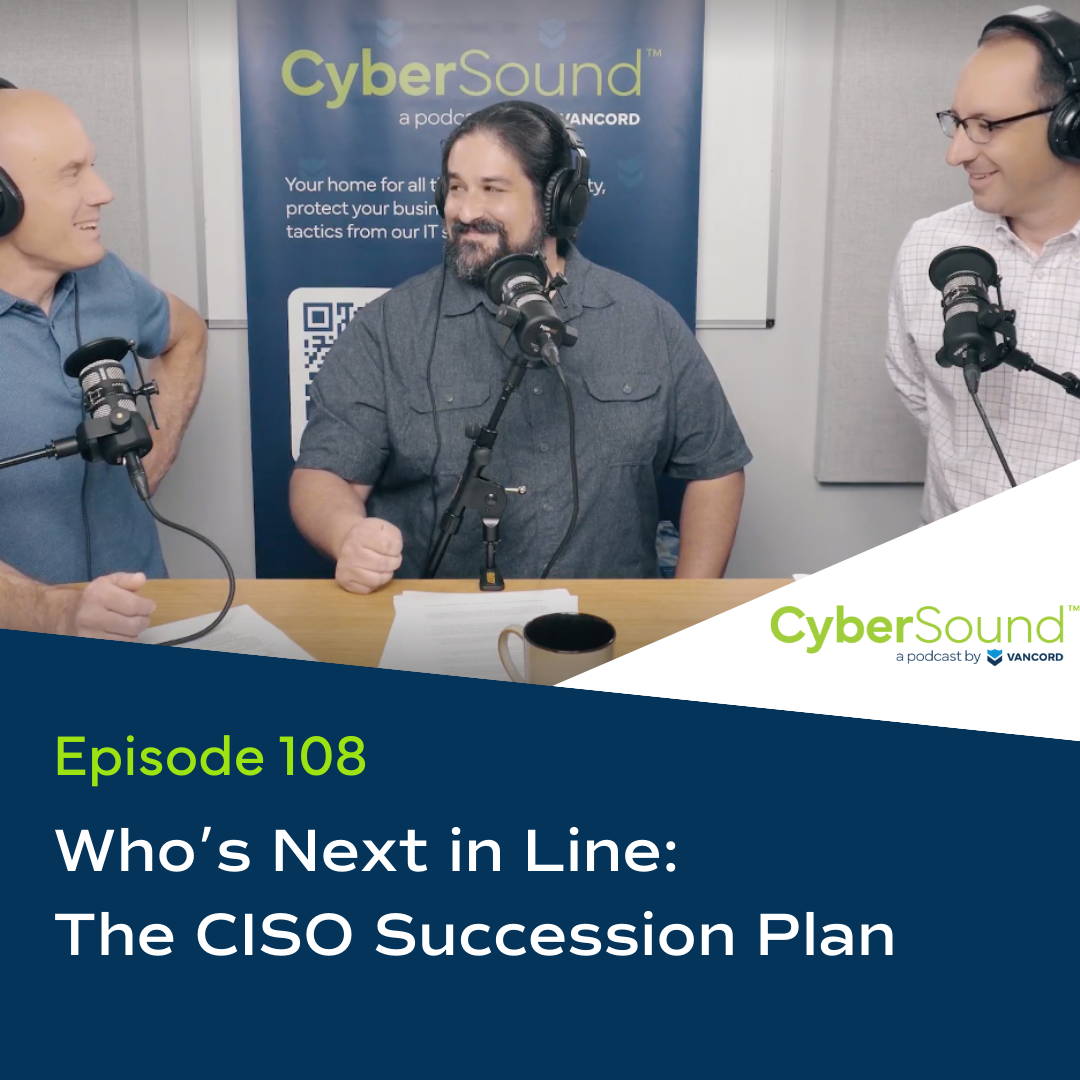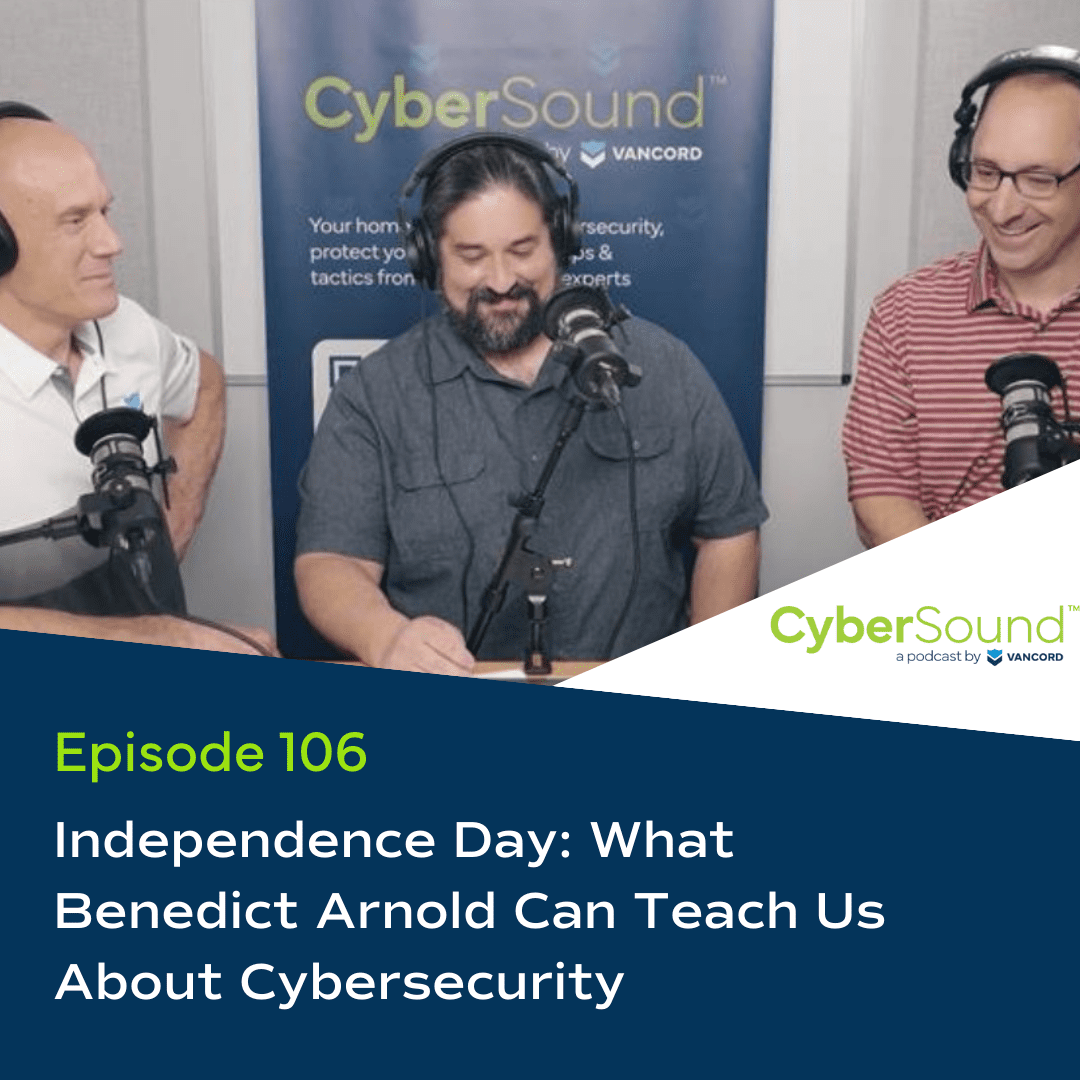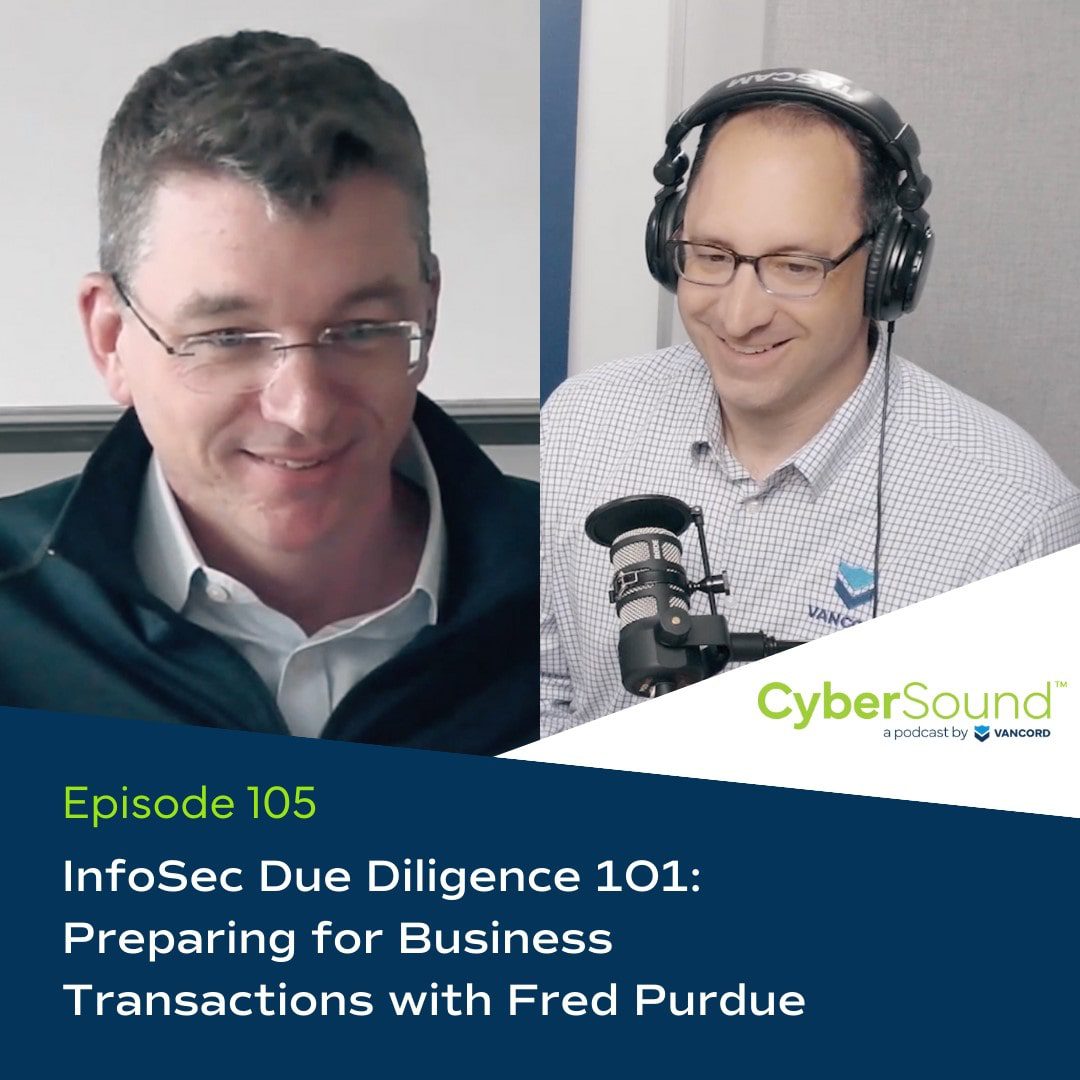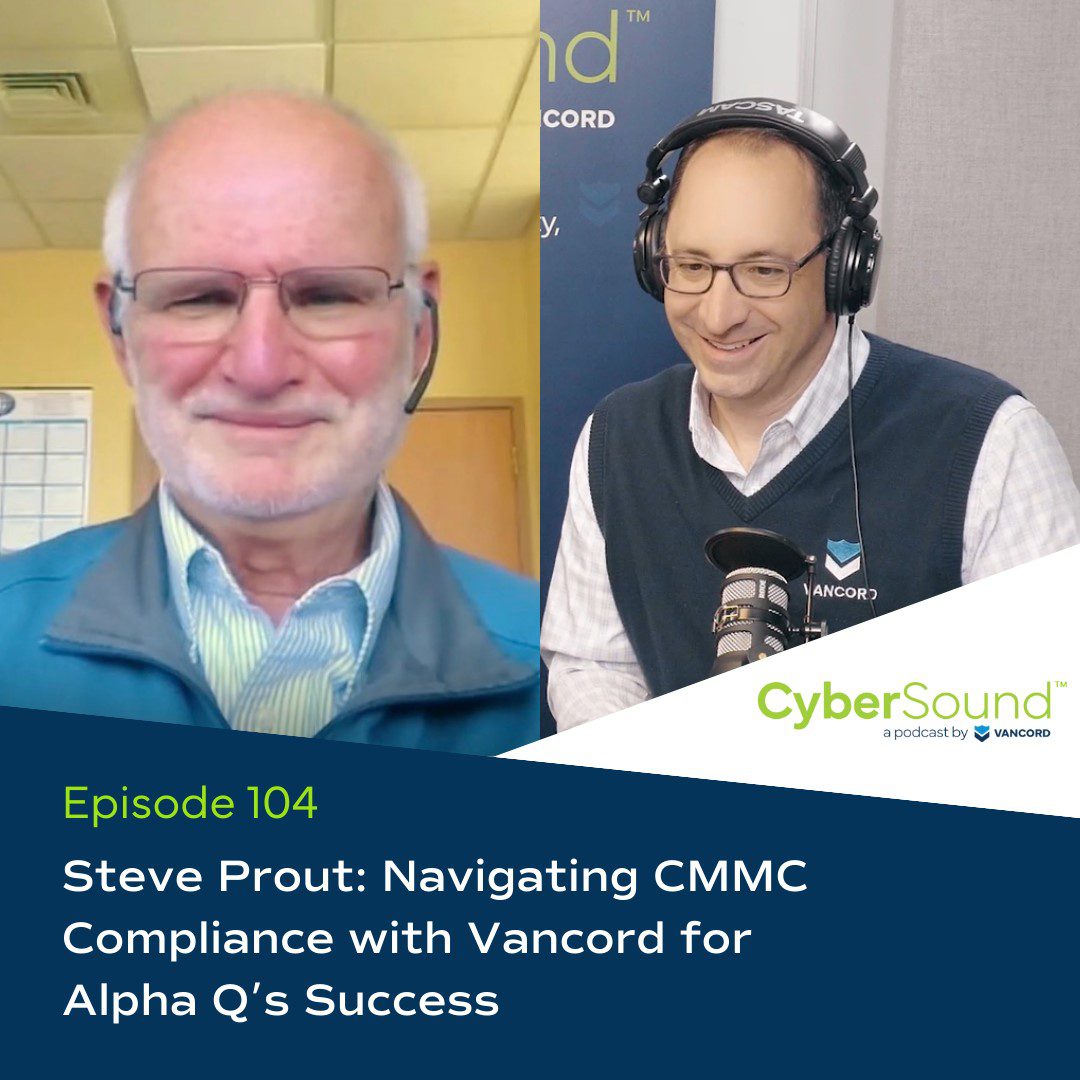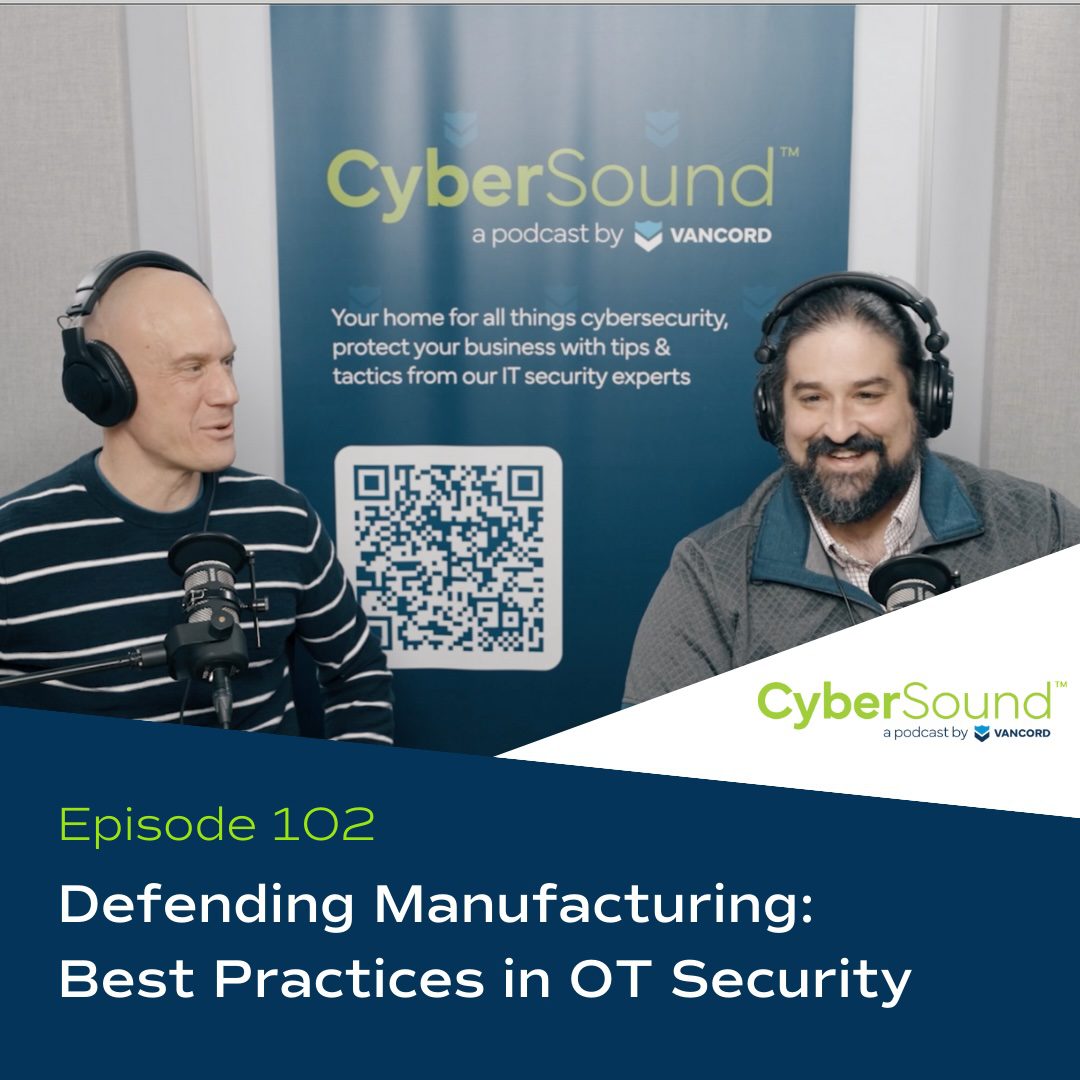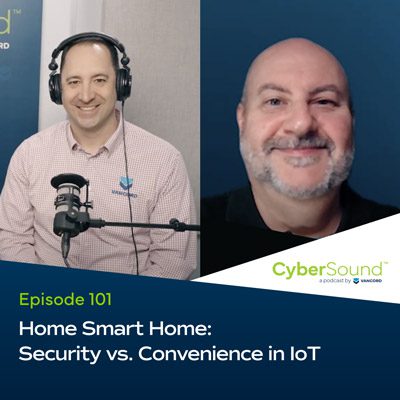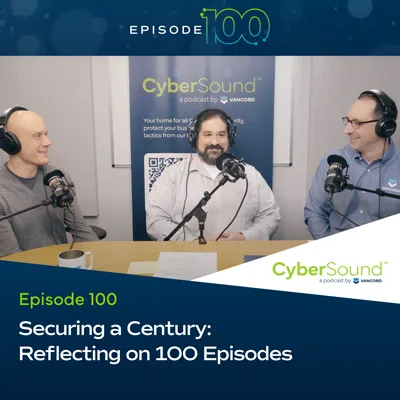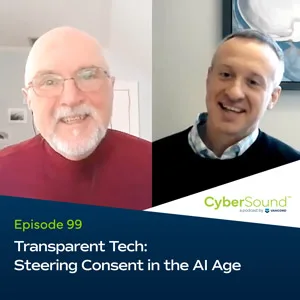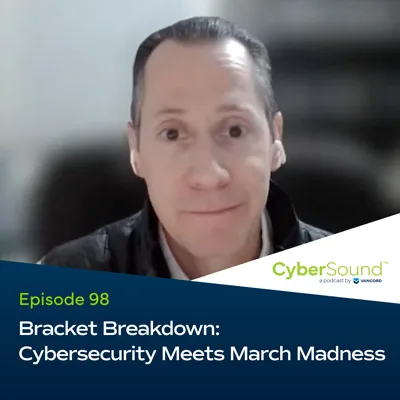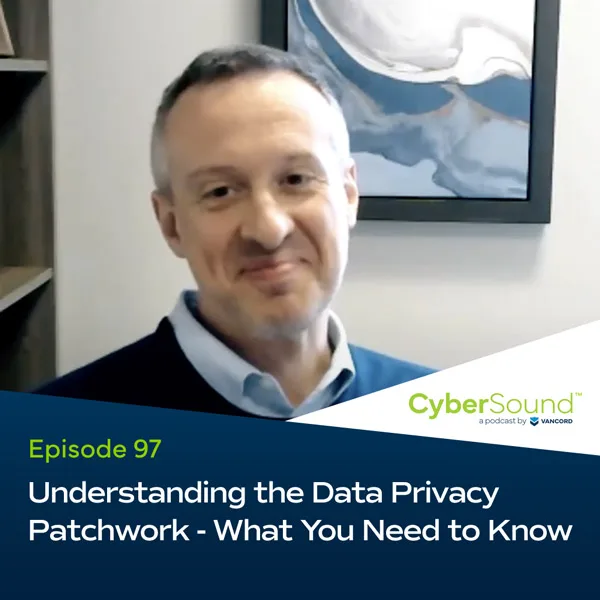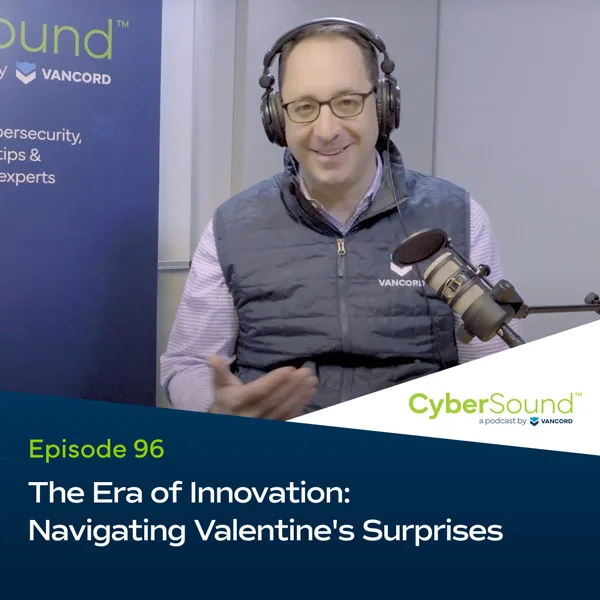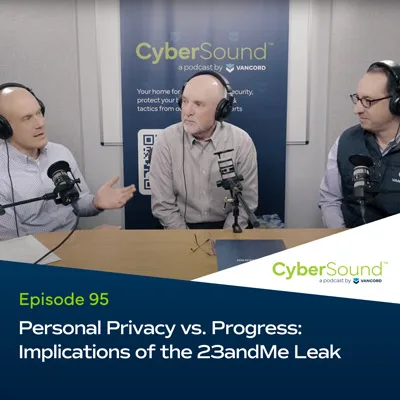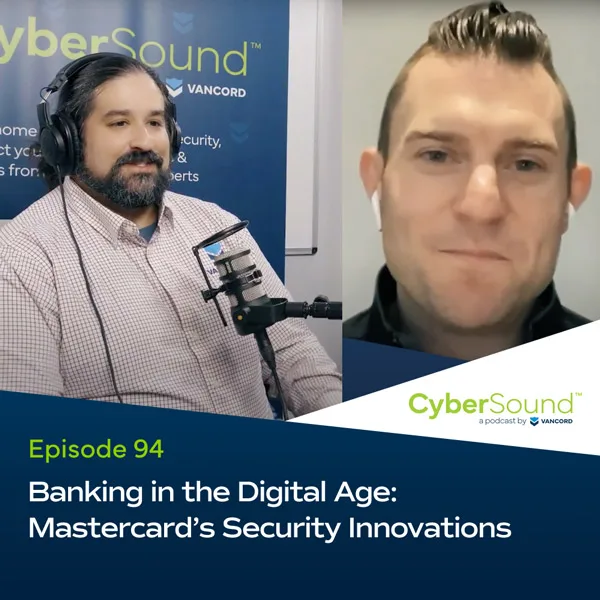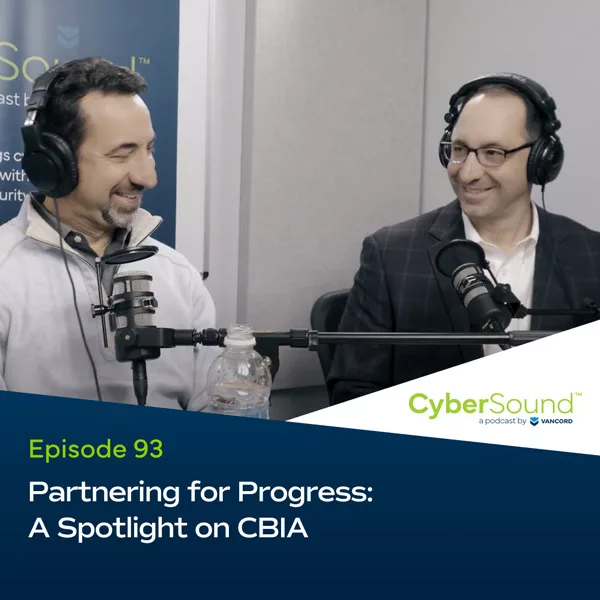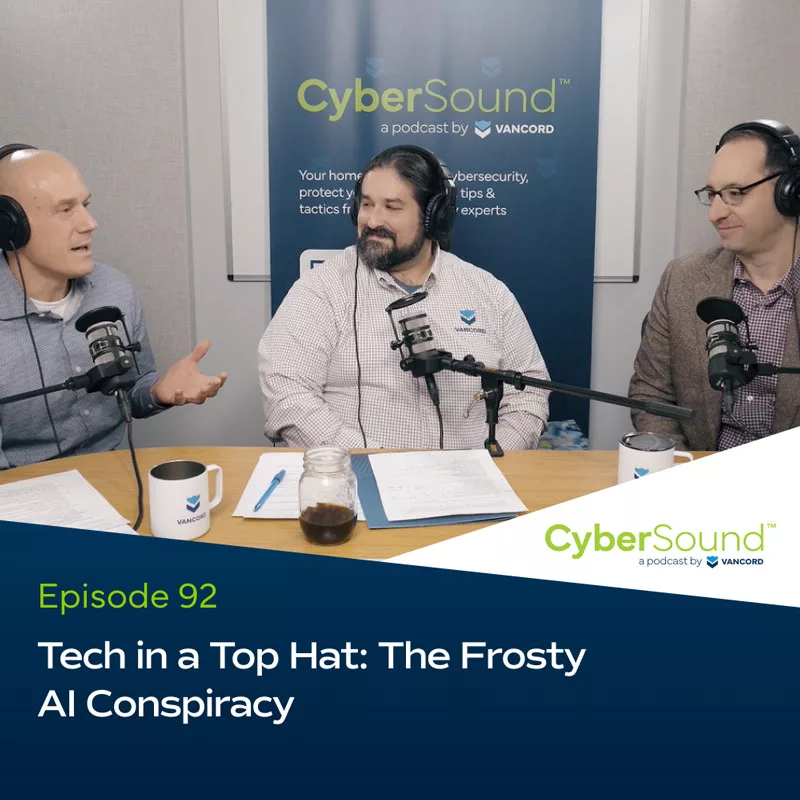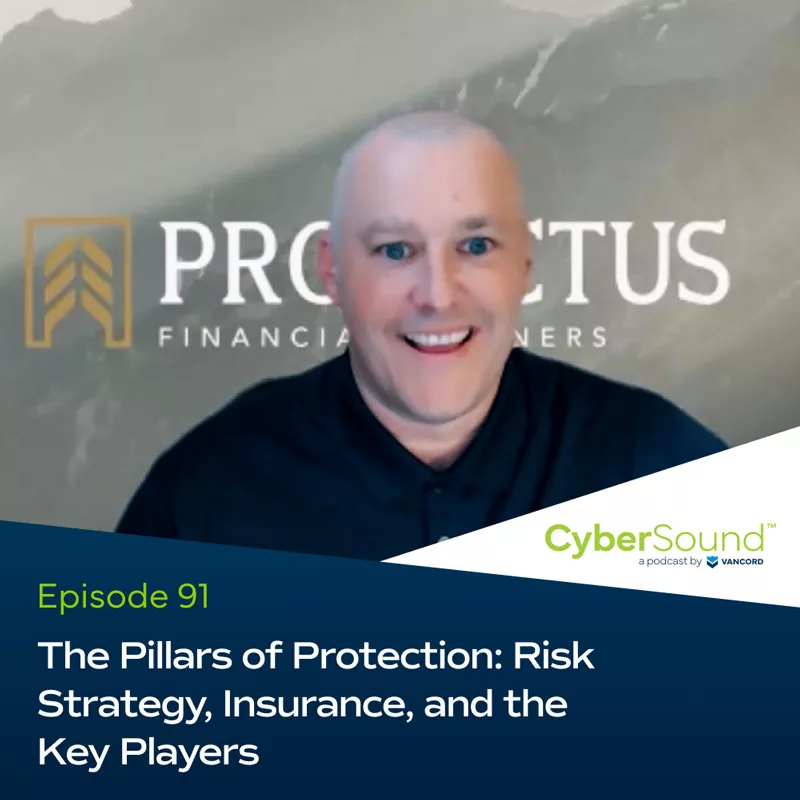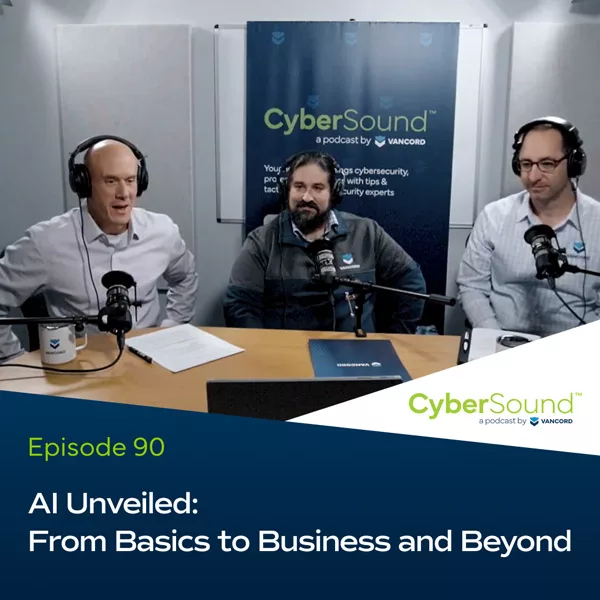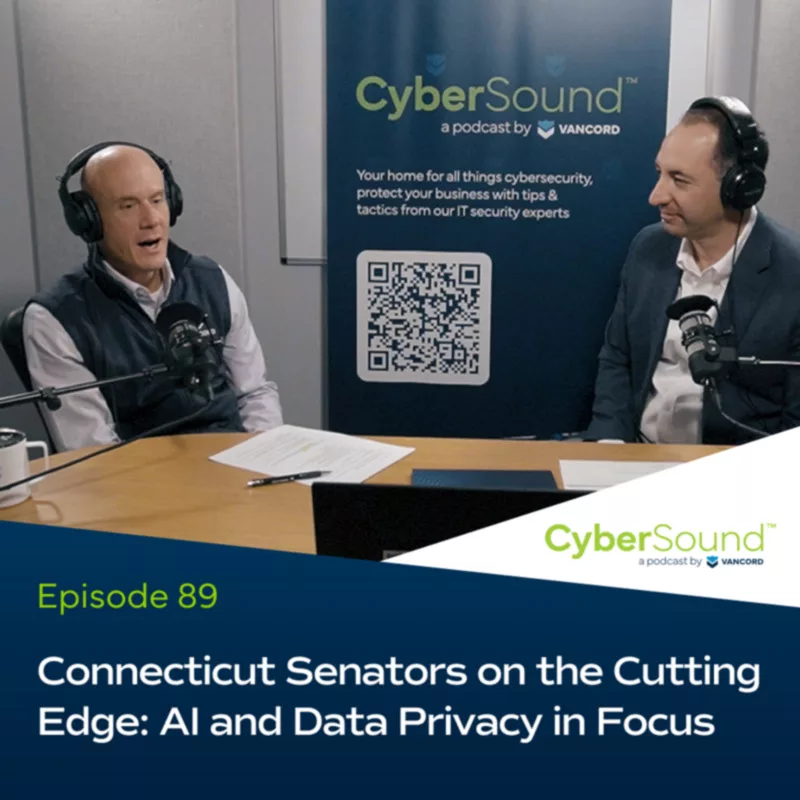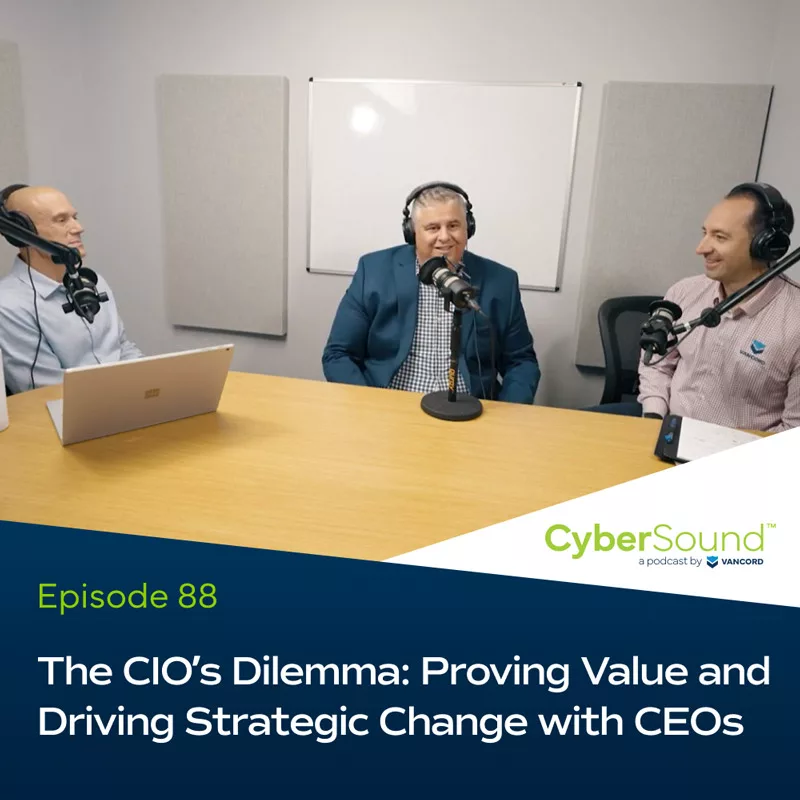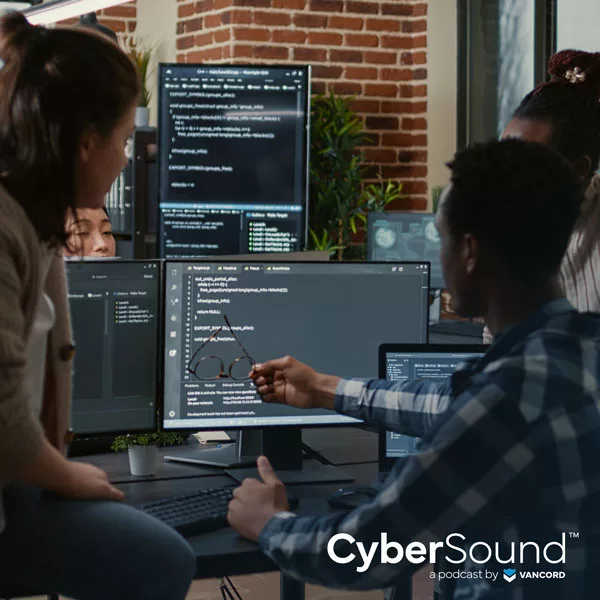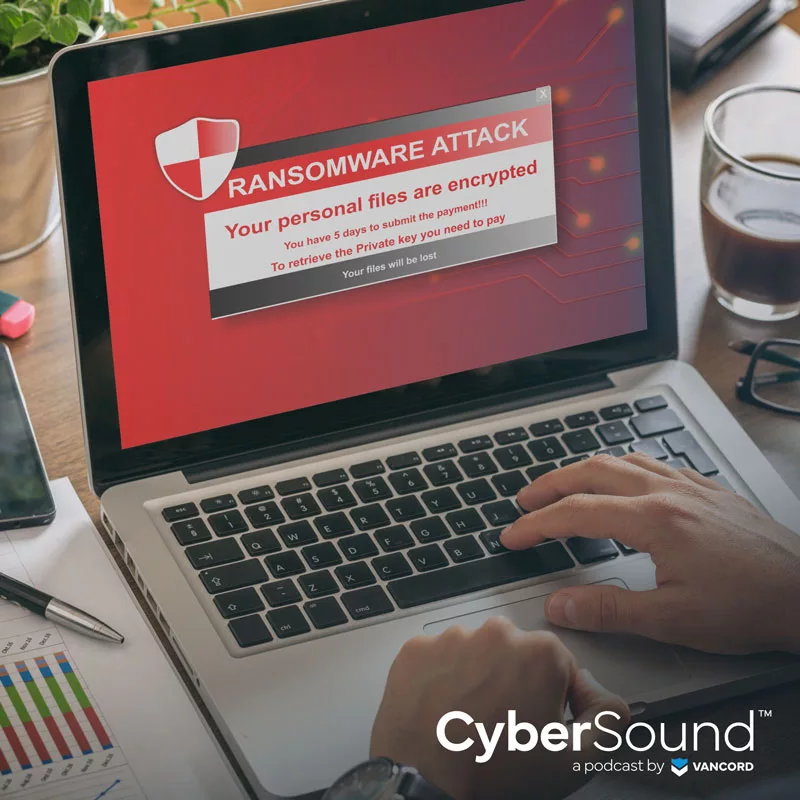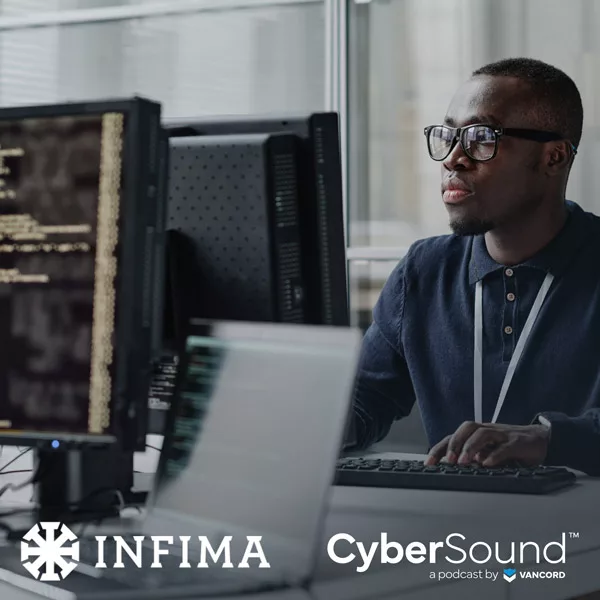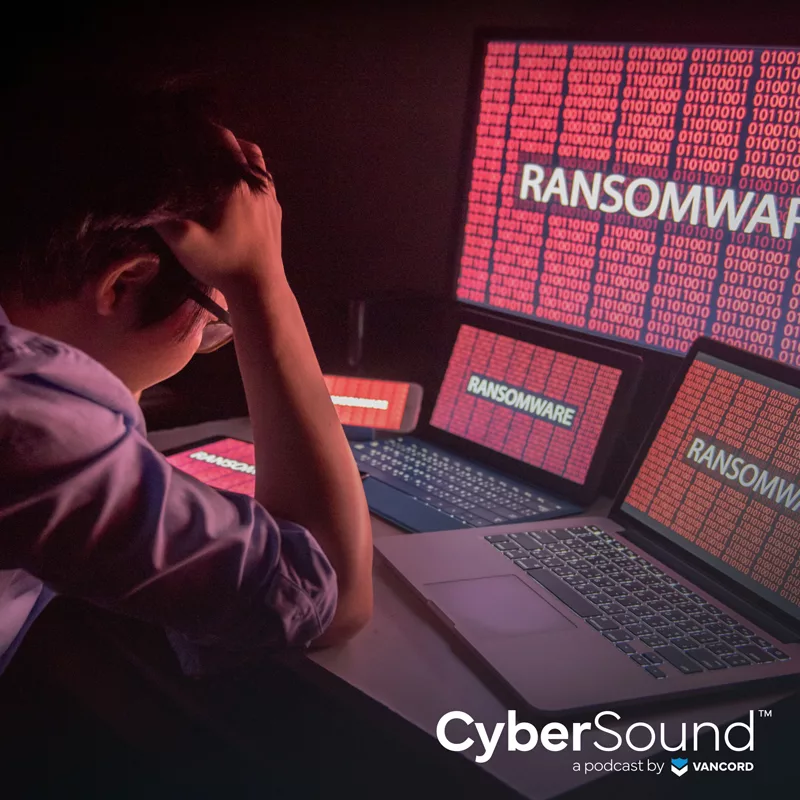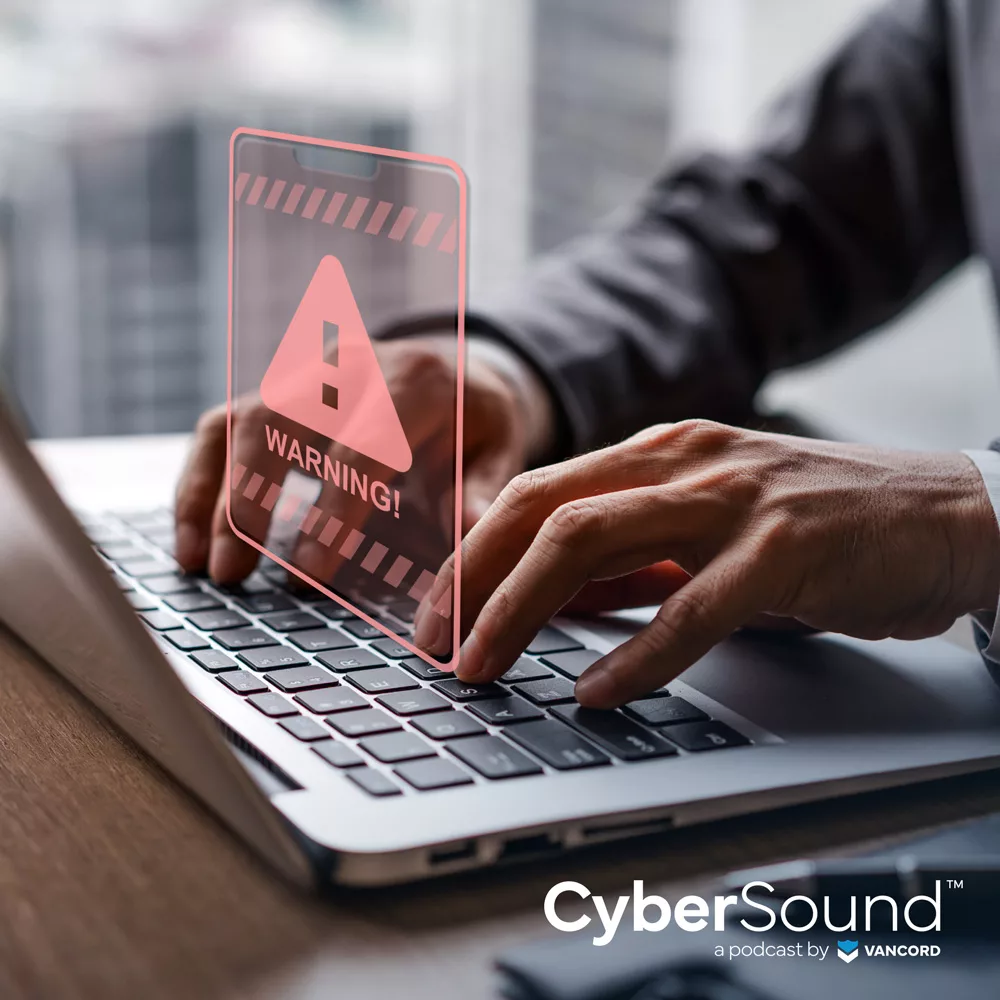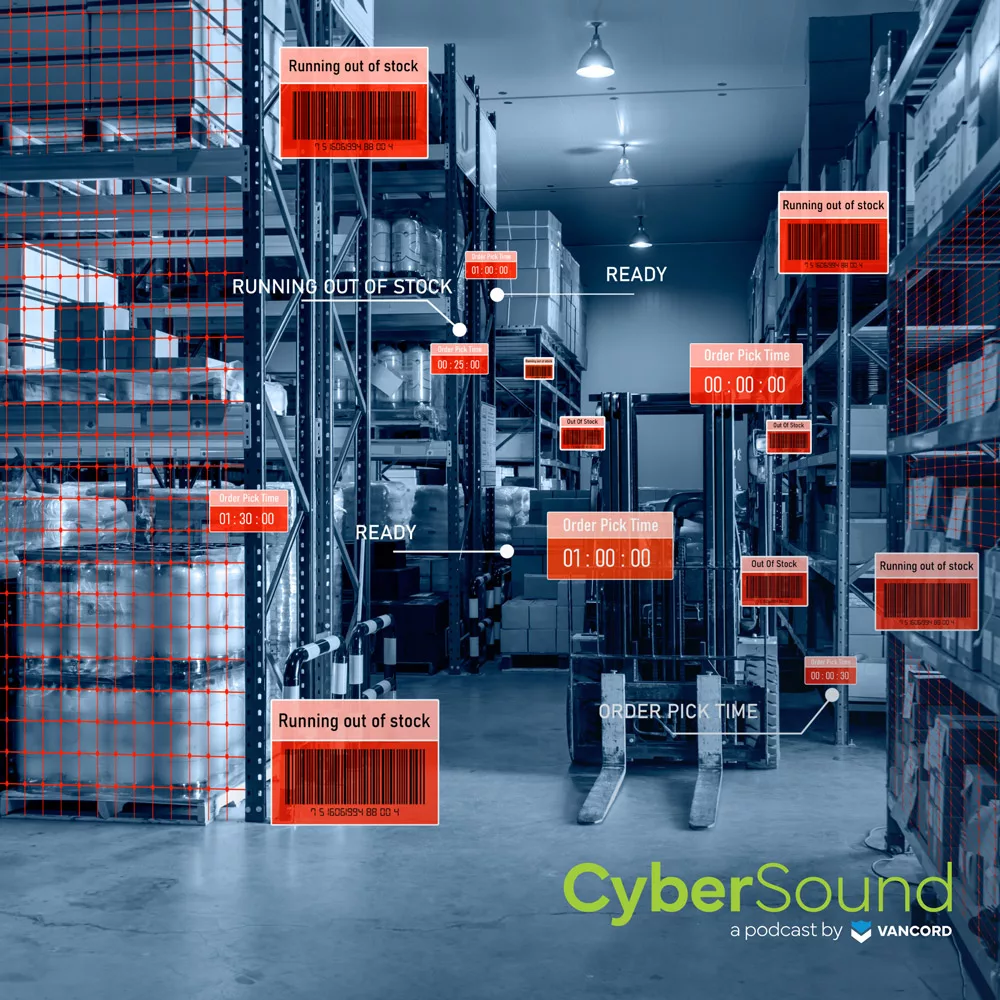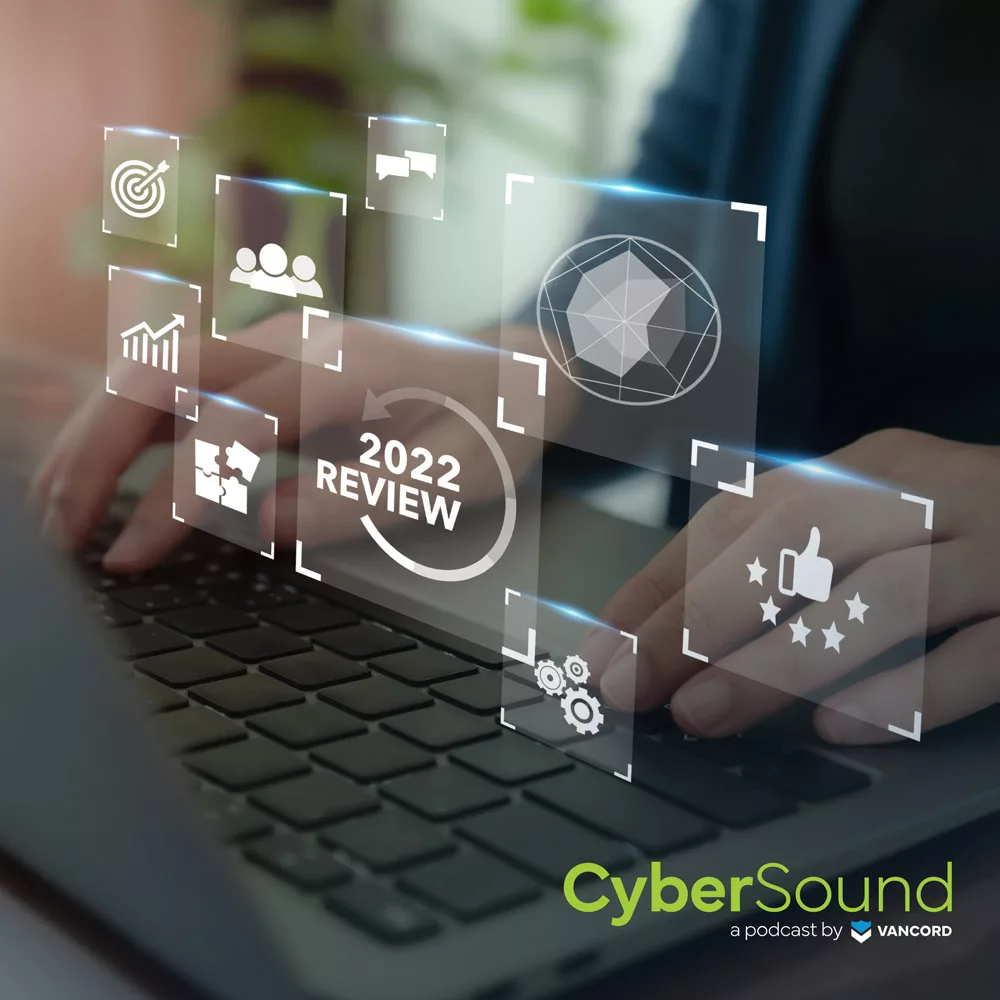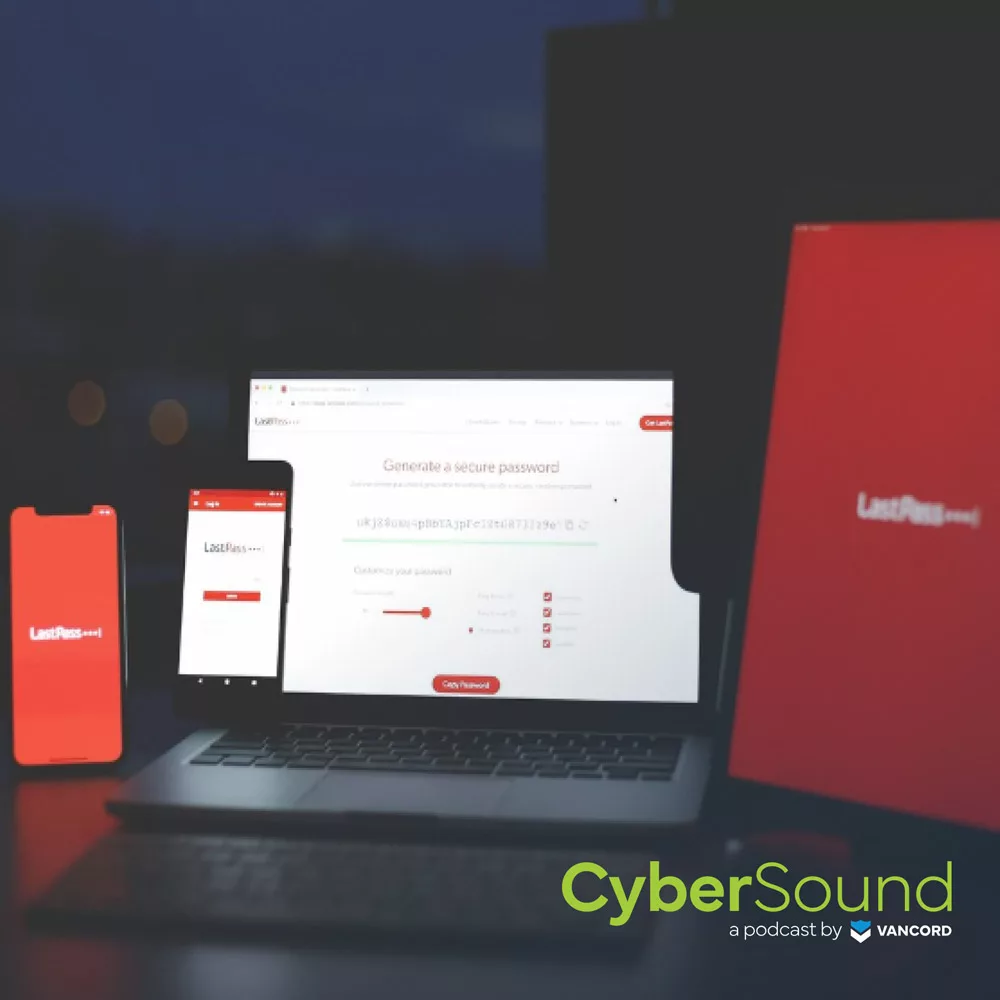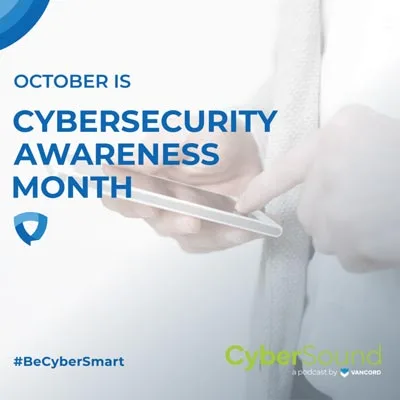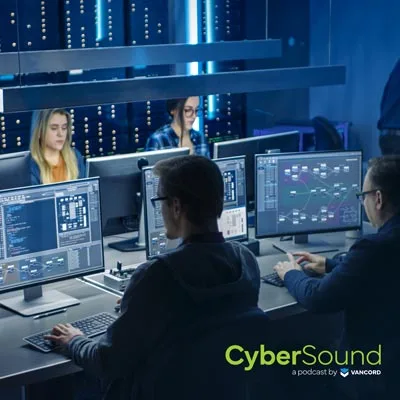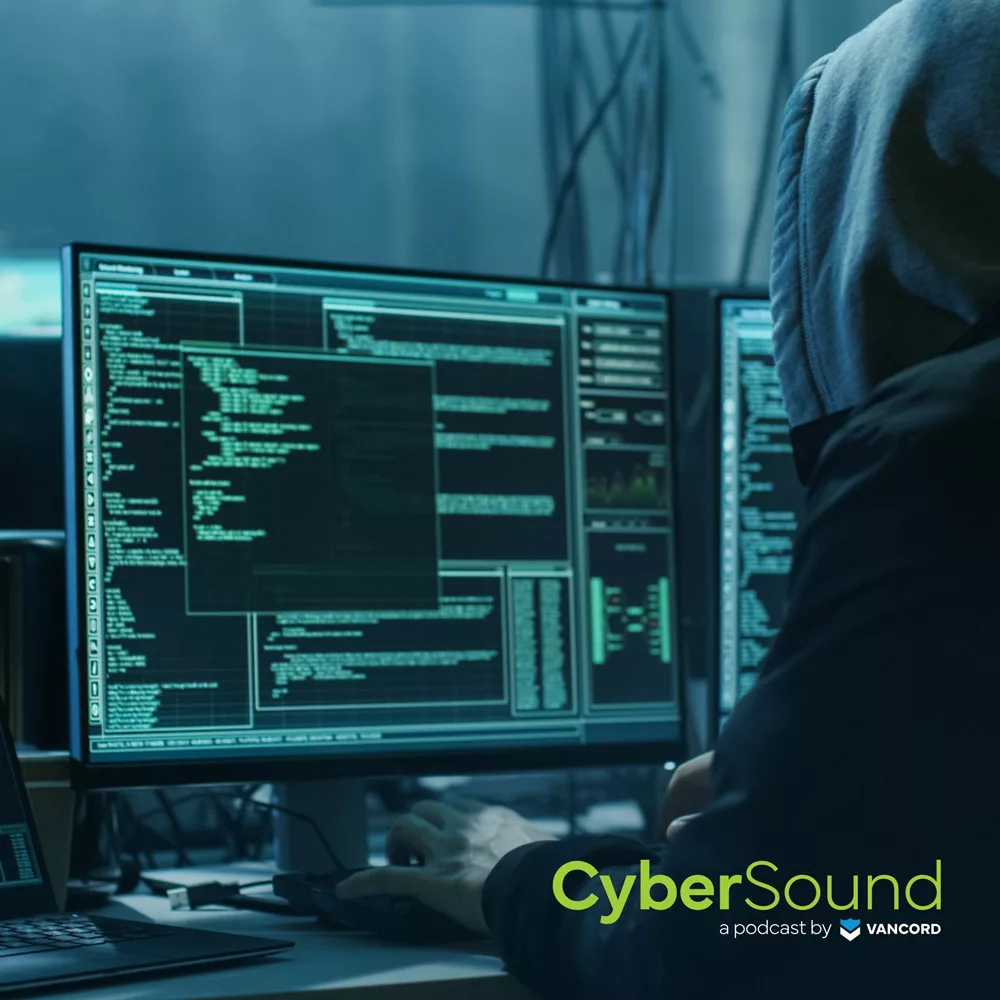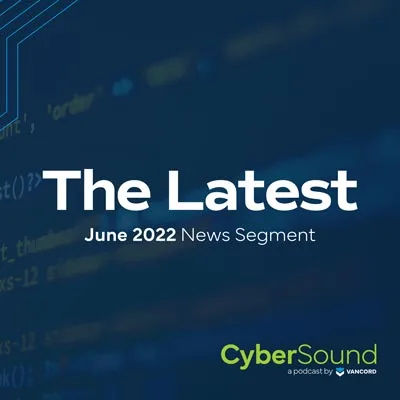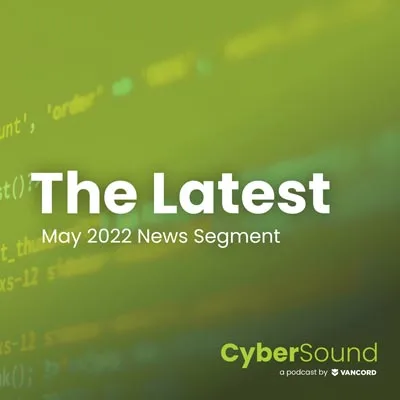Episode 122
Listen to this episode on
Episode Transcript
Speaker 1 00:02
This is CyberSound, your simplified and fundamentals-focused source for all things cybersecurity.
Jason Pufahl 00:11
Welcome to CyberSound. I’m your host, Jason Pufahl, joined more virtually than typical today, by Michael Grande, Hey Michael,
Michael Grande 00:19
Good morning!
Jason Pufahl 00:21
And we’ve got the Founder and CEO of VOLT.AI, Egor Olteanu, and I think I got it right?
Egor Olteanu 00:28
You got it.
Jason Pufahl 00:30
Hey, thanks for joining, Egor. I appreciate it.
Egor Olteanu 00:33
Of course, happy to be here.
Jason Pufahl 00:34
So we have a little bit of a different format for anybody who’s watching this sort of regularly. We’re always, at least, at least the Vancord folks are always in studio, and then we might have a remote person, but we’ve got a snowstorm today. We’re gonna try to capture this using something different. It’s a good opportunity for us to experiment with alternate strategies anyway. So, so here we are,
Michael Grande 00:54
Exciting. We have the technology, we can do this.
Jason Pufahl 00:57
We do, we and we still have our man behind the curtains organizing everything. So that’s the great part. So Egor, if you could, spend a minute on VOLT.AI. Just give everybody a sort of a good background to what you do.
Egor Olteanu 01:12
Sounds good. Well, unlike most typical tech founders, I started my career in the US Army, and after I got out, I was lucky enough to be recruited by Google’s research and development department, called Google X. I had various roles within Google for about eight years, and during my last year, I believe my co-founder now and my all time friend who we’ve been friends with for over 20 years, we were going to have lunch at one of our buildings, and that was the day of the shooting that happened on in some Bruno on one of the YouTube campuses. And when that happened, I guess our tech brains and my operation brain kind of came together, and we thought that we could build a product that could potentially stop events like that from happening. And if it cannot be stopped, it can integrate end to end into all existing physical security systems in order to be able to provide real time intel on what is happening in very complex and rapidly moving situations like that, to try and get first responders, be it internal or external, like law enforcement, to the place of where this is happening, in order to try and minimize the potential negative outcomes of it. So that’s how VOLT.AI got started.
Jason Pufahl 02:26
Wow, so So, so it’s near and dear, certainly to me. So I, you know, I spent a long time in higher ed, and you know, that was a huge topic, of course, while I was there. And you know probably, you know give or take, 25% of our client base is in that higher space. So knowing the way that they work here, they all, they tend to do sort of best of breed, everything. And so it’s not like he can roll in and say, well, here’s, you know, here’s the wireless access points that we know somebody’s going to have, or here’s the emergency communication system and associated camera infrastructure. So if you could spend a minute on how you integrate, and I’m sure you’re able to integrate with your whole variety of disparate systems, but you know, what does this look like for a campus to potentially adopt?
Egor Olteanu 03:16
Sure, so the first thing that we wanted to do is not to ask our customers, including schools and higher ed institutions like colleges and universities, to replace their cameras. So use the existing infrastructure that you take, that you have, obviously, you know, they should hopefully been installed in the past 10 years, so their IP cameras that we can have access to, right and then our system goes in and plugs in directly at the camera level. This is where we prefer. There’s other ways to do it, but typically we prefer to go at the camera level. And the idea behind it was to give full situational awareness of all your facilities, indoor and outdoor, meaning that all those cameras now get connected into one brain that is our brain, and every single camera understands what it’s seen, it’s seen, and then every single camera knows what all the other cameras are seen. So there is a dynamic thread that started in one place and starts moving through your areas of operation. We can understand what’s happening, where is it happening, and how is it most likely to be progressing. Another thing that we wanted to do is to get away from the idea where operators look at a bunch of different screens, because it doesn’t matter how many people you have. It doesn’t matter how good they are. Flipping through different screens and looking at a bunch of different camera views is not only time consuming and requires a lot of people to do that, but also people get complacent. They’re quickly looking at the same thing, and chances are something that does happen, be it a very violent event or a typical safety event on a daily basis, will probably be missed, and by the time you actually catch it and convey that information to somebody who needs to manage it or respond, it’s going to be too late. So we completely moved the idea of that user experience. Where we onboard our customers, creating 3D maps of their indoor facilities as well as outdoor facilities. So when something does happen, the system itself knows where it’s happening. It puts that live evidence front and center. And then if that event is dynamic and it moves through different areas, the system itself switches the different camera views. So essentially, you’re getting like a in real time. I stitch together video footage across all your cameras, and that information with active geo location where the most current camera, or cameras, if multiple cameras, are seeing the event, is being automatically transferred, not just to the incident commanders, but also to the people that need to respond, both internal and external. So essentially, everybody has the same level of Intel in real time, so everybody can do their job simultaneously, instead of blocking on each other because of lack of up to date information.
Michael Grande 05:59
When you’re talking about sort of creating that 3D model, are you, is there an uploading of, like, architectural plans, or sort of structural, you know, building schematics that help guide that process?
Egor Olteanu 06:10
Yes, but they don’t need to be very precise architectural schematics. We can go as I mean, the more detailed plans you can give us, the better we upload it into our system. The system creates those 3D maps. But we’ve also had customers that would send us, like evacuation plans that are not very detailed, because those maps are created internally by us. We can then afterwards go in and mold it, because some plans are 5, 10 years old. So other hallways were created. Doors were put into places where they didn’t exist. So we have the ability to constantly mold it. And you know what? If you have that map and you decide to change some of your internal layouts, you just tell us, and we change those layers to you, so essentially, you have a live 3D twin of your operations at all times. Now there are certain cases where no plans exist. I mean, we’ve had schools that were built in the 1950s and they’ve been modified so many times. Nobody even knows where those plans are, especially they’re public schools, sure. So we, we have the ability using, you know, the latest devices, to actually send in a team of folks. They go in, they walk around, they create the 3D floor plan that we then we beautify, and now you have it in the system. So there’s various ways to do it, but I would say over 90% of our customers, they do have some sort of a layout that they can send us, that we can start using.
Jason Pufahl 07:35
What’s the technology that actually identifies whether something is or isn’t a threat? Right? I’m just thinking about the amount of activity on a normal college campus, and frankly, maybe the occasional altercation that is pretty meaningless. How does that actually work?
Egor Olteanu 07:51
We create our own models. We use our own data sets in order to set a base layer, let’s say that, of threads that are most likely to happen, everything from weapons, be it pistols, long guns, stabbing weapons, etc, to things like safety incidents, you know, falls people down, things like crowd forming, things like people accessing areas they’re not supposed to access based on either the locations that get classified as restricted or perimeters, like you have a fence or you have a parking lot, that kind of being able to identify people and actions of those people, some of the most basic actions gives us a very good basic understanding of what a human can and cannot do within a particular space. Once we go in and the system starts understanding what the normal flow of people through time and space is at that particular facility, then it’s a lot easier for us to start developing more precise risk models, as we call them, and that could be both on what our system is seeing, for example, not 12 o’clock in this particular space, there should be absolutely no people. If we see 10 people run in one direction through that particular spot at 12 o’clock, and that has never happened. That’s probably an anomaly, right, right? Or it could be from the request of the customer, which happens often, where they go in and say, hey, listen, we’re worried about X, Y and Z. Can you detect that or not? And if we do not, then we need to, we try to understand what is the criticality of it. If that detection deals with the potential safety and security of personnel or their facilities, it will get prioritized much higher with us. It’ll go into one of the quickest sprints, and we’ll develop the capability. We will test it. And once it’s ready to be released on our once we tested it on our dev portal, it’s ready to be released, we’ll push it to the customer for them to test. And once it gets the stamp of approval, it actually gets released all the other customers that we have. And even if they don’t want it, they don’t have to use it. But if they do, they can, and they don’t have to pay extra for it. If the customer is asking for something that we do not consider to be critical, and we have a back and forth conversation with them to explain why we do not consider to be critical, then obviously it’s not going to get prioritized as highly something that could potentially save a life.
Michael Grande 10:18
So sort of talking through, you know, we work with, not only higher ed, we’ve got a lot of sort of K-12, independent schools that we work with, you know, and in many cases, right? They don’t have their own internal security service, right? They’re going to be relying on public safety for a lot of their, you know, on campus incidents or anything that may happen. You talked a little bit earlier about sort of getting a hook in to those systems so that they can see what’s happening, maybe in real time, or to help them. Can you just talk about how sort of that that process works?
Egor Olteanu 10:54
Sure. Well, we have plenty of schools that don’t have their own internal security. But what they do have is resource officers, which are typically, you know, some somebody from the local police department that would have to respond. In some cases, those resource officers even have an office within that particular school. And other cases, they do not, but they are somehow connected to them. So even when we start talking about potential install on the system, we always go and we talk to the local police departments and just give them a demo, saying, hey, we’re thinking about, you know, use it, bringing this to this particular school. Do you think it’s useful for you or not? Is it going to make your job better, faster, more effective? So there is a back and forth conversation, because ideal, and so far, we’ve had very positive reviews from every one of our pitches, but ideally we would like them to say, yes, this is a great tool that’s going to make us a lot more effective. You have our stamp of approval. It makes delay a lot of discussions with the schools themselves a lot easier and smoother. But the integration point, there’s two ways to do it, our preferred method, and we are using Rapid SOS as our partner that has integrations into non loyal call centers, but in some cases, they do not have that integration. And we go directly to the police department and we onboard them as first responders into our system, which means that if anything does happen and our system detects something, that’s validated, not escalated, they will also get the real time intel that I spoke about previously in order to be able to respond and manage that incident effectively.
Jason Pufahl 12:31
Do you do any automatic incident notification? So I’m thinking about the emergency communication systems that most schools and colleges have, maybe even some towns. Do you ever auto essentially auto trigger those, or auto notify or is that maybe too risky?
Egor Olteanu 12:51
I will help you understand auto trigger that, because all of our incidents get auto triggered, just some get validated, others do not, depending on the level of confidence of our systems, Nothing’s our community. So we do integrate with smart speakers when something is detected. There’s three ways that you can receive that you can receive it, and in most cases, they receive it by text message and or email, right? But the customer has final say who gets notified depending on the severity and the type of incident we can send it to. I mean, the system can send it to whoever you want, including the community, but there’s a lot of day to day stuff, yeah, that happens in a school or university that you don’t want to notify the larger community of, because they’re just going to get annoyed, right?
Jason Pufahl 12:59
Yeah, so more like to the community, right? So, so all of a sudden, you know, play the sirens that might be around a campus, or send out, you know, email alerts or text alerts, or, you know, some of the associated things, to let the entire community know that there’s an event,
Michael Grande 13:54
So sort of stepping off from what’s happening or how it’s happening into your maybe your go to market. Are you working primarily with, you know, access control and physical security companies when it comes to, you know, video systems, IP cameras, things like that, or are you more on the end user side and sort of focusing on, on, on those clients?
Egor Olteanu 14:18
We’re primarily on the end user side. So we, we go after the we go after those introductions ourselves. We have a lot of those conversations ourselves. We are working with some partners that are, you know, the the integrators, what you would call them, that bring them into their accounts. And that’s been very, very interesting and very effective. But we started, as you can imagine going directly to the end user, and so far, that’s been the most of our customers, because even though the system is working very well, it’s reliable. We’re still a startup, right? We’re a series, a startup that relies a lot on that back and forth feedback that. Get from the customer right? Every time we’re on board something, we have ongoing meetings. The cadence varies, but we want to know what’s working well, what’s not working well, and what is the system not doing that it should be doing. And that feedback is very critical.
Michael Grande 15:20
Yeah, I have a, maybe a high level question about, maybe where you see the future of the company, let’s say, five years from now. You know what’s, what’s your vision?
Egor Olteanu 15:31
Well, we want to be the smart security provider for the education space. That is the vision. And, you know, there’s a lot of companies in this space, not specifically education, but just, you know, bringing AI and automation to physical security. And there’s some very good companies, but everybody seems to be taking a slightly different approach, and the way they’re doing things, right? We placed our bet on real time Intel and geolocation. Other people place their bets on the ability to analyze a lot of data, the ability to integrate with every other system, whatever the case may be. But I don’t think there’s a clear winner in this space yet. There’s companies that have been there for a while that are crushing it, there’s companies that are new ones that are crushing it. There’s companies that are not very useful. But I think that in the next five years, there’s going to be sort of, you know, it’s going to start emerging which which companies are in the right track and for what reasons and which ones are not right.
Jason Pufahl 16:33
And so you actually made a statement that I was going to verify, is your target customer and your primary customer now in that education space, because I was thinking municipalities. And when you said, what I think campus, you know, there’s a lot of large companies with, you know, pretty large campuses, I’m assuming, yeah, I’m assuming, that there’s certainly a customer, but probably not the dominant one.
Egor Olteanu 16:54
Exactly. And this has been a a road for us that took a few years to figure out, where do we fit in the best? And we do have customers. We have enterprise customers, a lot of them, right? But last year, it was the data, our internal data, started to show that there’s a clear winner that is emerging, and that’s the education space, both K through 12, private and public, as well as higher education institutions like colleges and universities. And I’m not going to tell you all the variables that go into it. I’m sure you know them, but one of the first things that we would begin to notice is that whenever we do our pitch, whenever we start talking to somebody about our potential partnerships, when we talk to somebody in education space, within 30 seconds, it immediately clicks with them. They’re like, of course, get it right. This is important. This is awesome, especially since we don’t just do weapons detection. We do that very well. But most of the stuff that we do is the day to day safety incidents that these institutions deal with that we can help them with so they can, they can justify the system on a daily basis, and they know they’re covered in case something god forbid, you know, goes very wrong, but, and it doesn’t matter if they have the budget, if they have the project, the value add them, the differentiation immediately clicks with enterprise. What we’ve noticed is that it doesn’t always click if it if, if it’s a priority for them to upgrade their system. Then it clicks, and then they start talking about timelines and budgets and whatever the case may be, but if it’s not the priority at that particular time, it just doesn’t. And the conversation is more like, No, listen, this is great, but we have 100 different things that we’re trying to do this year. You know, let’s talk again later.
Jason Pufahl 18:36
Yeah. I mean, you certainly, I can certainly see where you have a nice, focused market. And, you know, customers either fully understand the need or maybe, frankly, aren’t there yet. You know, it’s too bad it’s a need that we have to fulfill, right? But it’s a really innovative way to approach it, and, and, and, you know, it’s interesting, because we have these conversations pretty routinely with our clients, and we’re not in you’re really the physical security space, per se. But there always are questions around you, how do you integrate with some of the technology that we have? How do we get information out more quickly? I mean, this sounds like a really, a pretty seamless way to approach that problem.
Egor Olteanu 19:17
It was a role to get there, for sure.
Jason Pufahl 19:19
Yeah. I have no doubt. In a road going forward.
Egor Olteanu 19:22
Absolutely.
Jason Pufahl 19:25
Anything we haven’t covered that you wanted to make sure we spent a second on today?
Egor Olteanu 19:31
No, I think we did a pretty good job at this. The one thing that I would say that what we pride ourselves on is that, typically, we do free pilots, and the reason that we do that is because we really want to show the effectiveness of the system and the value of the system to the end user before they even think about paying for it, right? And if somebody hears about us through you and they want to try it out, just get in touch with us if it makes sense. And there’s this is something that we can justify, we’re more than happy to come in and pretty much do everything end to end for you. Give you a pilot. Try it out, see if it works, see if you like it, see if you don’t like it, right? But it won’t cost you anything. Yeah?
Jason Pufahl 20:17
I’m sure we’ll be talking in the future. I have no doubt. So appreciate it. Egor, thanks for joining. I know we had a couple starts to stop trying to get this to go. So I appreciate everybody making it work today. Look forward to talking with you in the future. I always end this the same which is, if anybody has questions, we’re happy to either facilitate a conversation with you directly, answer what we can. But you know, this is an important topic, and I think the fact that you’re in this space, you know, your timing is obviously great, and I think the way you’re approaching it is really innovative. So I’ll be really curious to see where you go from here.
Egor Olteanu 20:51
Appreciate it. We’ll try not to disappoint you.
Jason Pufahl 20:55
All right, thanks, guys. Appreciate it. Thanks. Bye, bye.
20:58
We’d love to hear your feedback. Feel free to get in touch at Vancord on LinkedIn and remember, stay vigilant, stay resilient. This has been CyberSound.
